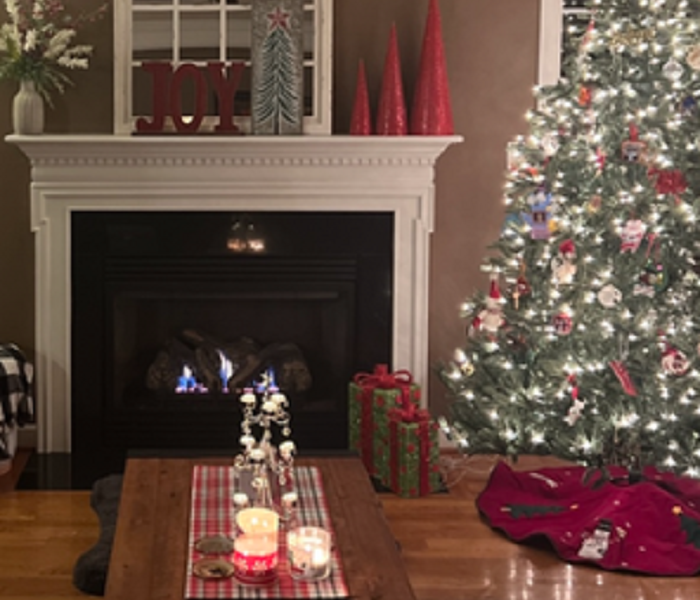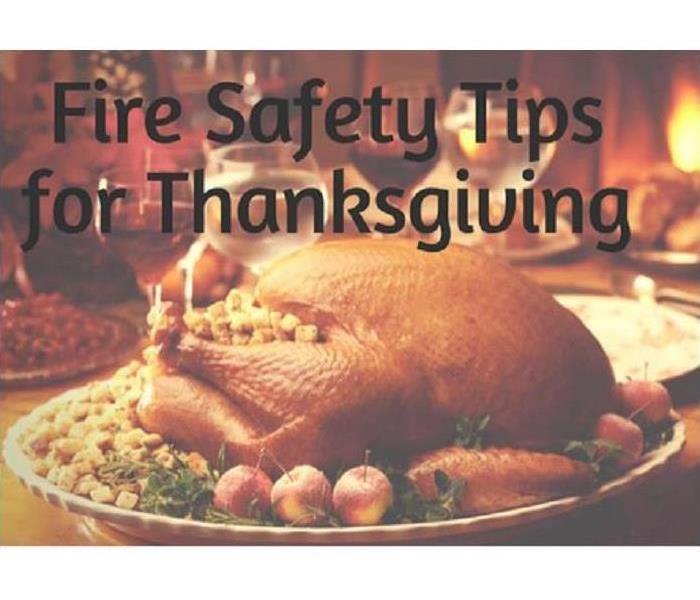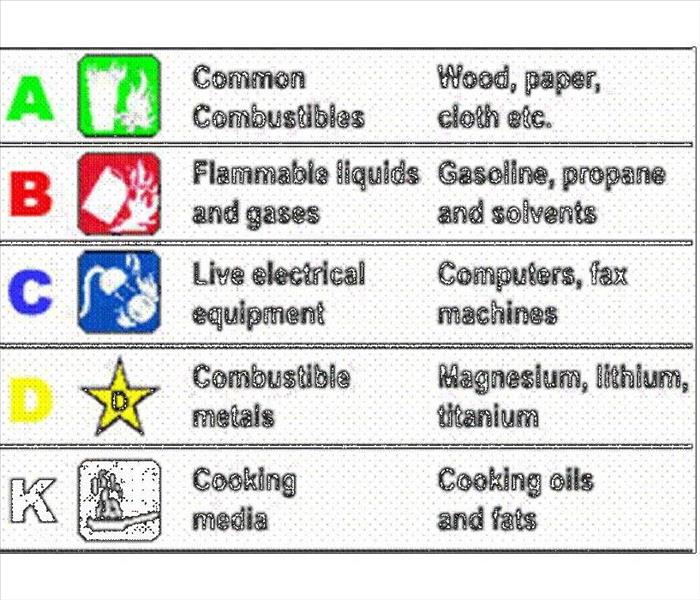Recent Fire Damage Posts
Christmas, Candles, Live Trees and Fires Go Hand In Hand
12/14/2023 (Permalink)
This is the most wonderful time of the year! Christmas carols, Christmas decorations, candles burning around the house and sometimes all of the excitement of Christmas can make us forget that little tea candle we left burning in the bathroom. Candle fires increase drastically at this time of year.
Here are some tips when using candles:
- If you light multiple candles make sure to do a count of how many you lit so you know how many you need to blow out.
- Try to keep candles in the room you are in so you never leave a candle unattended.
- Although it is nice to put a candle in the bathroom during a holiday party, try to avoid doing this because these are the most forgotten about that usually lead to fires. Instead,use a battery operated tea light in areas you will not be to prevent fires.
Live Christmas trees are amazing! They are so festive, they smell great, they are tradition BUT they need to stay hydrated to prevent them from catching fire. Many people are putting up their trees earlier and earlier. If you are someone who loves to put your tree up early either use an artificial tree or be sure to water your live tree daily.
As always, SERVPRO of Dale City/Lake Ridge is always here to help!
703-583-8484
Frying Your Thanksgiving Turkey Could be a Fire Hazard If Not Careful!
11/9/2022 (Permalink)
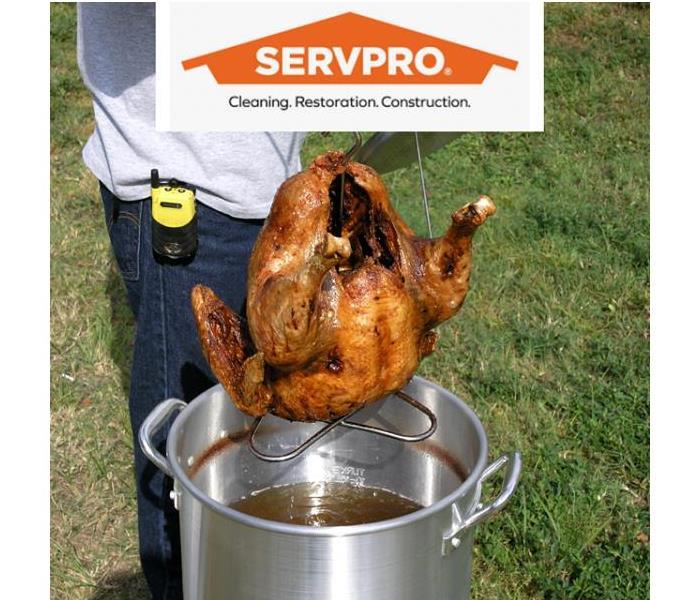 Turkey frying is faster and creates a moist, delicious turkey if done right. Follow these fire safety tips to ensure a smooth Thanksgiving Dinner!
Turkey frying is faster and creates a moist, delicious turkey if done right. Follow these fire safety tips to ensure a smooth Thanksgiving Dinner!
Deep-frying a turkey can bring amazing results: a glistening bird with golden-brown skin that’s cooked perfectly in minutes. But anyone who has watched an online video in which a deep-fried turkey goes up in flames should understand that the technique is no joke. Done right, you could be filling your plate in an hour. Done wrong, you could be eating out of the vending machine at the Emergency Room.
5 DANGERS OF DEEP FRYING A TURKEY
- Turkey fryers can easily tip over, spilling hot cooking oil over a large area or surface
- An over-filled cooking pot can cause cooking oil to spill or splatter when the turkey is placed in the pot.
- Even a small amount of cooking oil spilling on a hot burner can cause a large fire.
- Without thermostat controls, deep fryers can overheat cooking oil to the point of igniting a fire.
- The sides of the cooking pot, lid, and pot handles can get dangerously hot.
TIPS FOR AMAZING RESULTS
- Test to see how much oil you truly need. Do not fill the pot with oil yet. Using cold water, measure how much liquid should be put in the pot to cover the turkey without overflowing onto the burner.
- Only fry a turkey OUTSIDE. Turkey frying should only be done outdoors, on a flat and level surface—not in an enclosed area (like a kitchen or garage) or on a wooden structure (like a deck)! Also, remember that oil is hard to clean off concrete. Make sure to clear the area of children, pets, and especially intoxicated relatives.
- Use a fresh bird, or fully thaw a frozen one. The minute any moisture from the turkey hits hot oil, the oil will start to splatter and can cause a spillover effect, starting a fire.
- Forget about the stuffing. You’ll have to keep the stuffing on the side when frying a turkey. Also, remember to remove the giblets from the bird’s cavity before frying.
- Lower the bird slowly into the oil. Do not drop the turkey into the deep fryer.
- Do not move the pot. Adjusting a vat of hot oil is incredibly dangerous.
- Stay nearby. Never leave the turkey unattended. It can only take a moment for something to go wrong.
- Don’t start enjoying your adult beverages until after the oil has cooled. Better to be alert until the bird is cooked.
- Wait to carve. To help retain the hot juices, let the cooked turkey rest for at least 30 minutes.
- Keep heavy blankets nearby for emergencies. Water will not extinguish an oil fire; it will only spread the ignited oil. A wool blanket will help put out flare-ups.
Following all of these tips will keep you and your loved ones safe!
As always we are here to help @ 703-583-8484.
Candle Usage is Up In Fall . . . Candle Safety Tips Can Help
11/1/2022 (Permalink)
 Candles are beautiful & can set the mood to a more relaxed environment or they can set the house on fire depending if you follow candle safety tips.
Candles are beautiful & can set the mood to a more relaxed environment or they can set the house on fire depending if you follow candle safety tips.
Candle Fire Safety Fires caused by the use of candles in our homes have increased dramatically over the last two decades. Sales of candles are up and it is estimated that 7 of 10 homes use candles today. Candles cause an estimated 15,600 fires in residential structures, 150 deaths, 1,270 injuries, and $539 million in estimated direct property damage each year.Over half (55%) of home candle fires start because the candle is too close to some combustible material.
More candle fires (38%) begin in the bedroom than in any other room. Falling asleep is a factor in 12% of home candle fires and 26% of the associated deaths.
Half of all civilian candle fire deaths occur between Midnight and 6am.
December is the peak month for candle fires; Christmas is the peak day.
Young children and older adults have the highest death risk from candle fires.
The risk of a fatal candle fire appears higher when candles are used for light. CANDLE FIRE SAFETY RULES
Some simple fire safety rules related to the use of candles can significantly reduce the possibility of a devastating fire in your home.Allow nothing that can burn within a one foot safety circle around a burning candle.
Don’t put candles in windows near blinds or curtains.
Never put candles near Christmas trees, decorations, clothing or paper.Trim all candle wicks to ¼ inch; put out the candle when it burns down to 2 inches high.
Always extinguish candles after use, when leaving the room, and when going to bed.
Keep candles out of children’s and pets reach. (Keep matches and lighters away too!)
Use sturdy metal or glass holders that won’t tip over, that are big enough to collect melted wax.
NEVER LEAVE LIGHTED CANDLES UNATTENDED, and burn candles only with constant adult supervision.
Keep away from flammable liquids as the flame can ignite fumes.
Flashlights are safer than candles during power failure.
Avoid carrying lit candle and don’t use a lighted candle in a closet looking for things.
Never use a candle for light while refueling equipment with kerosene or gas. The flame will ignite fumes. Source: osfc.pa.gov/FireSafety/
Fire Damage takes special training! Trust SERVPRO of Dale City/Lake Ridge to help!
10/3/2022 (Permalink)
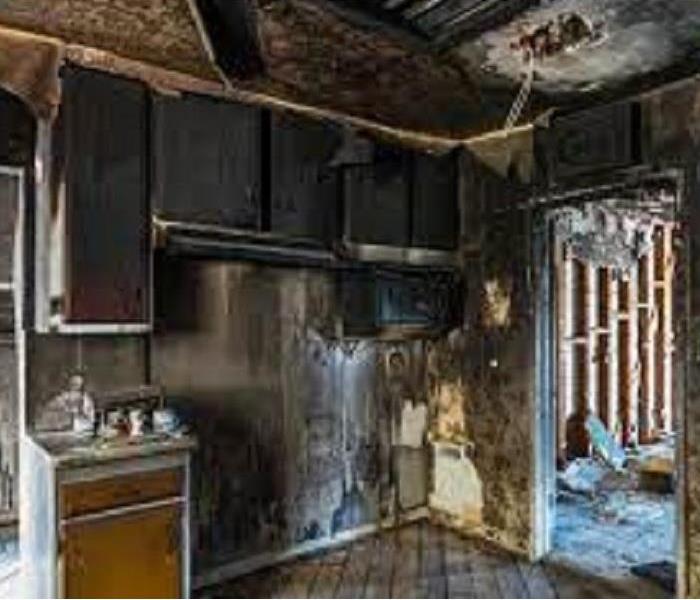 Trust SERVPRO of Dale City/Lake Ridge with your home or business after a fire loss. We can help get you back to preloss condition.
Trust SERVPRO of Dale City/Lake Ridge with your home or business after a fire loss. We can help get you back to preloss condition.
Beyond the fire damage, smoke and soot can be toxic, creating a hazardous situation. Even if a fire is contained in one area, smoke and soot can travel throughout an entire structure. Our professionals are highly-trained, with the experience, tools, and knowledge to clean up fire damage and remove the smell of smoke. In keeping with our goal to restore your home and cherished possessions to their pre-fire condition, we use appropriate personal protective measures to safely clean, deodorize and restore your property.
You can TRUST the BRIGHT GREEN CLEAN-UP TEAM @ SERVPRO of Dale City/Lake Ridge.
703-583-8484
Fire Safety Tips
9/20/2022 (Permalink)
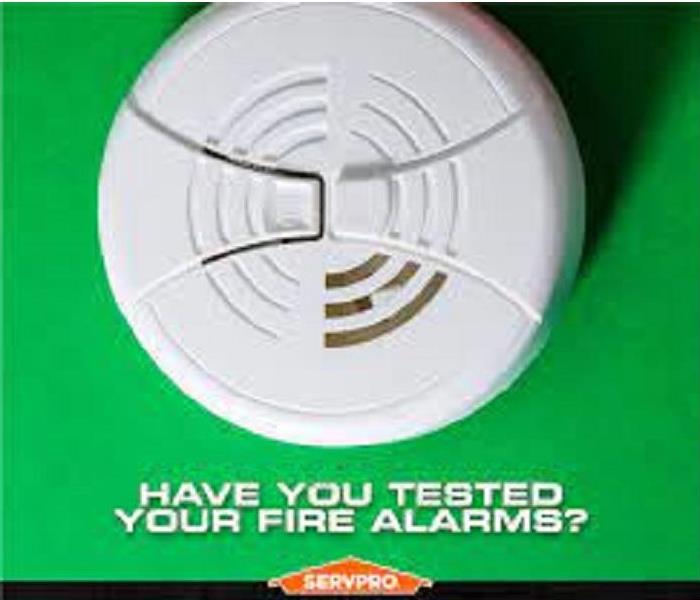 A working fire alarm could be the difference between life and death. Keep your family safe by following the tips listed here.
A working fire alarm could be the difference between life and death. Keep your family safe by following the tips listed here.
Did you know that if a fire starts in your home you may have as little as two minutes to escape? During a fire, early warning from a working smoke alarm plus a fire escape plan that has been practiced regularly can save lives. Learn what else to do to keep your loved ones safe!
Top Tips for Fire Safety
Install smoke alarms on every level of your home, inside bedrooms and outside sleeping areas.
If a multi-level home, store safety ladders under each bed upstairs.Test smoke alarms every month. If they’re not working, change the batteries.
Proactively change the batteries every daylight savings change.
Talk with all family members about a fire escape plan and practice the plan twice a year.
If a fire occurs in your home, GET OUT, STAY OUT and CALL FOR HELP. Never go back inside for anything or anyone.
Is Your Kitchen a Fire Hazard?
9/20/2022 (Permalink)
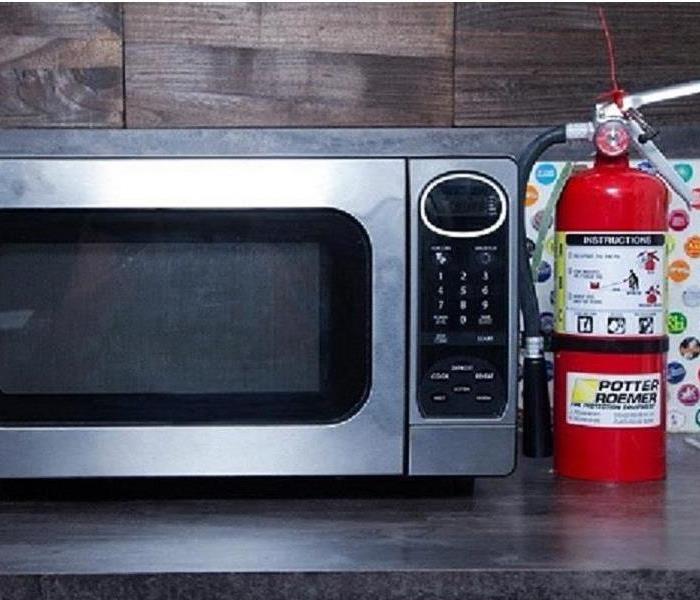 Make sure stand alone microwaves are free from clutter and vents are not obstructed.
Make sure stand alone microwaves are free from clutter and vents are not obstructed.
Beware of Common Fire Risks in the KitchenMost home fires start in the kitchen during cooking — usually on stovetops —not in the oven. Be sure to stay in the kitchen when cooking, frying, or grilling on your stove top.
- Check for curtains, towel racks or even paper towel dispensers sitting too close to the burners.
- Keep Pam, Oil away from burners.
- If your microwave isn’t built in, make sure it’s clear of surrounding clutter and its vents aren’t obstructed.
- If you don’t already have one, buy a fire extinguisher to keep within easy reach should something ignite while you’re cooking.
- Remember, don’t toss water on a grease fire if you’re caught without an extinguisher. If a fire starts in a pan — and many do — put a lid on it to suffocate the flames.
SOURCE: American Red Cross
Is Your Workplace Safe From Fire Hazards?
9/20/2022 (Permalink)
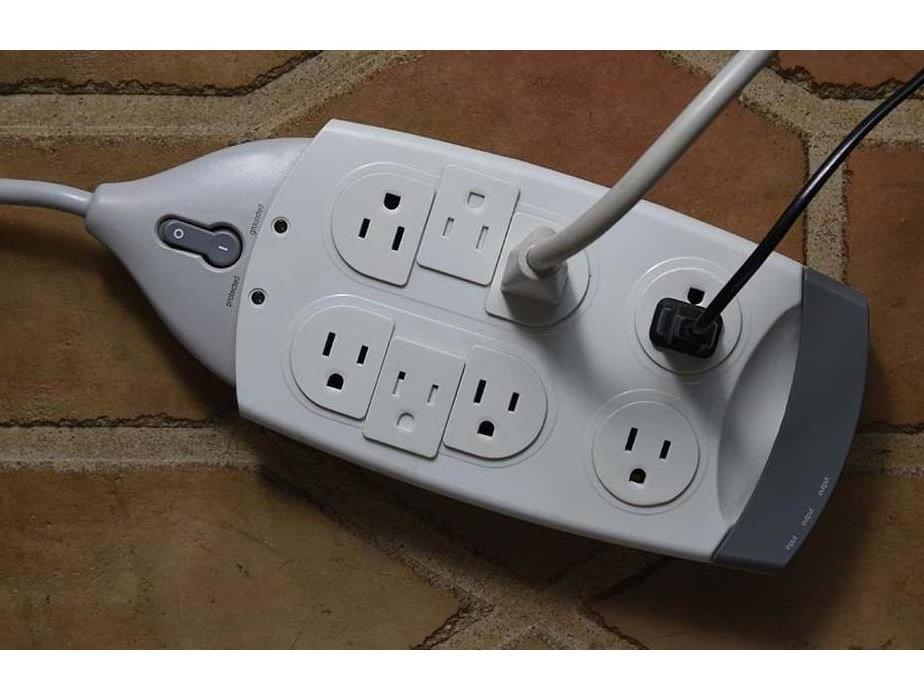 Keep power cords free from debris and paper and do not over exert the power strip.
Keep power cords free from debris and paper and do not over exert the power strip.
Prevent workplace fires!
Follow These Tips
- Check for damaged electrical cords and cables. Don't overload outlets and power strips.
- WorkplaceFireSafety: Never use the elevator if there is a fire. Walk, don't run, down the stairs. Use your phone flashlight to see.
- WorkplaceFireSafety: Keep your workspace and equipment clean, dry and well ventilated.
- Don't use candles at work ever
- Know where the closest exit is at all times.
How To Put Out a Grill Fire?
7/21/2022 (Permalink)
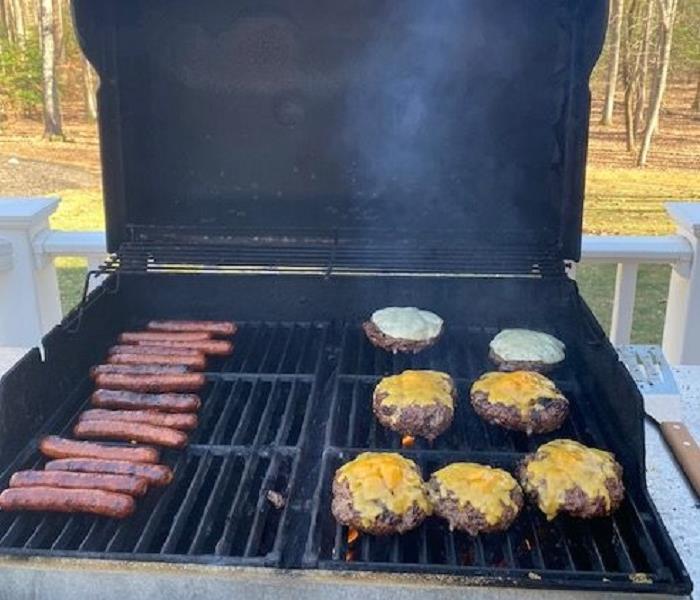 A simple family cookout can go from fun to terror should your grill catch fire! Be prepared with the tips above to help extinguish the grill flames!!
A simple family cookout can go from fun to terror should your grill catch fire! Be prepared with the tips above to help extinguish the grill flames!!
A grill fire can quickly spread to your home or deck. It is IMPORTANT to know how to properly put out a grill fire to prevent the spread to your home!
When the weather warms up, it is the perfect time to start the grill and enjoy cooking delicious food with friends and family. However, before grilling season begins, make sure you are prepared to help keep your home and family safe. According to the National Fire Protection Association (NFPA), every year there are over 10,000 home fires started by grills. Accidents happen, so it is important to know common ways gas grill fires start and how to make sure you are prepared to put out a fire in case one does start while you are grilling food.
Common Causes of Grill Fires
While barbecues are prone to flame up when grease starts to collect, it is not just your grease tray that you should be keeping an eye on. Outdoor grills are often placed in hazardous locations too close to the house, deck railings, outdoor sheds and under patio awnings. To help ensure a safe grilling and BBQ experience, place your grill at least 10 feet from the home or other structures. Also make sure there are no obstructions like a patio awning or tree branches above the grill that could catch on fire while you are grilling.
HOW TO EXTINGUISH THE GRILL FLAMES SAFELY?
Flare ups from cooking food on the grill are natural. However, when the flames on your BBQ become too large or spread to adjacent areas, it is important to have a fire extinguisher within reach and know how to use it.
1. If your gas grill catches fire, the first thing you should do is attempt to turn the burners off. If you can reach the knobs safely (on a gas grill), this will help stop additional fuel from feeding the fire and creating a larger problem.
2. You can also close the grill lid, as a lack of oxygen will help to ease the fire and slow it down.
3. Use a fire extinguisher to extinguish the flames using the P.A.S.S. technique - pull, aim, squeeze, and sweep. Once the fire has been put out, make sure to switch off any burners on the grill that were still on.
Be Prepared
To help protect your home and family, be prepared and practice grill safety. Check your gas lines to make sure there are no gas leaks before lighting the grill and keep grease trays and grill plates clean by using a grill brush after each use. For protection in case a grill fire, have a fire extinguisher within reach in the event a small gas fire breaks out.
SERVPRO of Dale City/Lake Ridge & SERVPRO of Woodbridge/Lorton are always here to help with any fire damage clean-up.
703-583-8484
SOURCE: firstalert.com/how-to-put-out-a-grill-fire
Smoke Loss is Complex
3/30/2022 (Permalink)
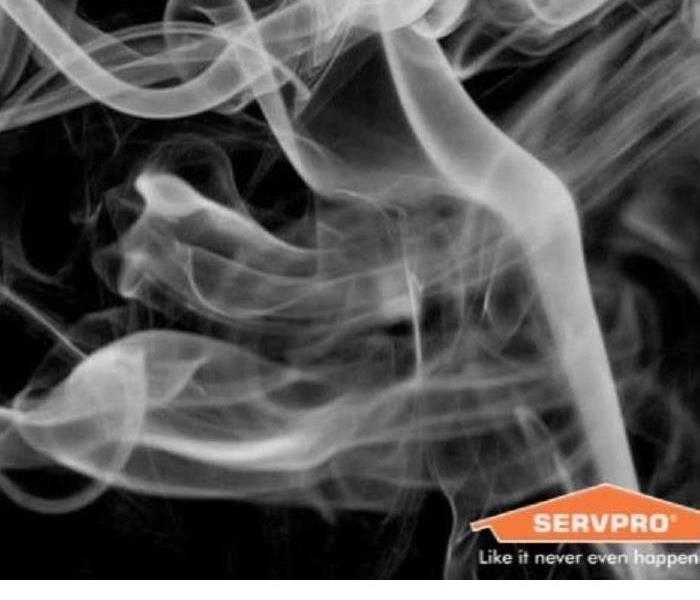 Smoke from a fire loss goes in every cavity of the property. Trust SERVPRO of Dale City/Lake Ridge to get you back to preloss condition.
Smoke from a fire loss goes in every cavity of the property. Trust SERVPRO of Dale City/Lake Ridge to get you back to preloss condition.
A fire loss can result in complex damages because of the unique behavior of smoke. A trained professional should survey the loss site to determine the extent to which fire, smoke, heat and moisture impacted building materials and contents.
SERVPRO Dale City/Lake Ridge Professionals know smoke can penetrate various cavities within the structure, causing hidden damage and odor. Our crew’s knowledge of building systems helps them investigate how far smoke damage may have spread. Here are some facts you may not know about smoke:
· Hot smoke migrates to cooler areas and upper levels of a structure.
· Smoke flows around plumbing systems, seeping through the holes used by pipes to go from floor to floor.
· The type of smoke may greatly affect the restoration process.
The different types of Smoke:
Wet Smoke (Plastic and Rubber)
Low heat, smoldering, pungent odor, sticky, smeary. Smoke webs are more difficult to clean.
Dry Smoke (Paper and Wood)
Fast burning, high temperatures, heat rises therefore smoke rises.
Protein Fire Residue (Produced by evaporation of a material rather than from a fire)
Virtually invisible, discolors paints and varnishes, extreme pungent odor.
Fuel Oil Soot (Furnace Puff Backs)
While “puff backs” can create havoc for homeowners, SERVPRO Dale City/Lake Ridge Professionals can, in most cases, restore the contents and structure quickly.
SERVPRO Dale City/Lake Ridge Professionals are trained to handle even the toughest losses. If your home or business sustains fire or smoke damage, contact us at 703-583-8484 to help make it “Like it never even happened.”
Do You Have a Fire Escape Plan?
11/9/2021 (Permalink)
Our team at SERVPRO of Dale City/Lake Ridge and SERVPRO of Woodbridge/Lorton is here to help with fire restoration after the event. However, we pride ourselves in helping our communities by educating them on fire prevention and by helping to prepare their households in case a fire does occur. Planning is the key to safety. Your ability to get out of your home during a fire depends on advance warning from smoke alarms and advance planning. The National Fire Protection Association (NFPA) recommends that you pull together everyone in your household and make a plan.
How To Make A Home Fire Escape Plan
- Draw a map of your home. Show all doors and windows.
- Visit each room. Find two ways out.
- All windows and doors should open easily. You should be able to use them to get outside.
- Make sure your home has smoke alarms. Push the test button to make sure each alarm is working.
- Pick a meeting place outside. It should be in front of your home. Everyone will meet at the meeting place.
- Make sure your house or building number can be seen from the street.
- Talk about your plan with everyone in your home.
- Learn the emergency phone number for your fire department.
- Practice your home fire drill!
Make your own home fire escape plan using the grid provided at https://www.nfpa.org/Public-Education.
Our team at SERVPRO of Dale City/Lake Ridge and SERVPRO of Woodbridge/Lorton is always here to help!
Are Your Loved Ones Safe in Nursing Homes?
11/1/2021 (Permalink)
Making the decision to have a loved one moved to a nursing home is never an easy task. We understand that having a loved one in a nursing home can be stressful and can often make people feel somewhat helpless. Worries can intensify when you hear of the tragic nursing home fire that occurred in 2003 in Hartford, Connecticut. The fire killed 16 people and injured 23 more including a staff member.
However, you can play an important role to increase the safety of your loved one. According to the National Fire Protection Association (NFPA) here are a few things to consider when choosing a nursing home or checking on someone already in a home.
- Is the building well maintained? Make certain that paper and other storage items do not block doors or hallways needed for escape routes.
- Check to make certain there is an evacuation plan in place that involves all staff and is practiced regularly.
- Are there safety systems in place such as alternative exits, smoke detectors and sprinklers?
- Check on the staff-to-patient ratio. How many staff per resident during the day and especially at night or on weekends and holidays? Is supervisory staff available to carryout an escape plan if there is a fire?
- Are there guidelines for people who smoke such as a separate room or staff supervision?
- Does nursing home management take your questions regarding safety seriously and are they forthcoming with information?
You have a right to get answers regarding the safety conditions that effect your loved one. Make certain you take the time to ask. For further information and messages for families and staff, please visit NFPA.org.
How Common Are Fires in Apartment Complexes?
10/18/2021 (Permalink)
Fires at apartment complexes occur more often than most people think. In 2019, our team at SERVPRO of Dale City/Lake Ridge and SERVPRO of Woodbridge/Lorton was called out to an apartment complex fire in Dumfries, VA. Fortunately, no one was severely injured, but the entire building was impacted. Each of the units had sustained damage from either the fire, smoke, or water. Many tenants lost all or most of their personal contents. It took almost a year before the building was inhabitable again.
Most apartment complex fires can be attributed to the following five causes: cooking, space heaters, electrical malfunction, arson, and appliances malfunctioning.
As in the case of the fire in Dumfries, most of these are easily preventable by adhering to the following fire safety tips:
- Never leave food cooking on the stove unattended, especially around children
- Check twice to make certain the stove is turned off before leaving the kitchen
- Store a fire extinguisher in or nearby the kitchen
- Do not plug a space heater into a power strip. Only plug them directly into outlets
- Never overload power strips by plugging in several different small appliances
- Only smoke in designated smoking areas and properly dispose of cigarettes
- Do not use appliances with frayed wires
- Contact the leasing office or maintenance team immediately if experiencing electrical issues
For more fire safety tips, please visit the National Fire Protection Association at nfpa.org.
Why Do We Use Ultrasonics Equipment when Cleaning Fire-Damaged Contents?
9/16/2021 (Permalink)
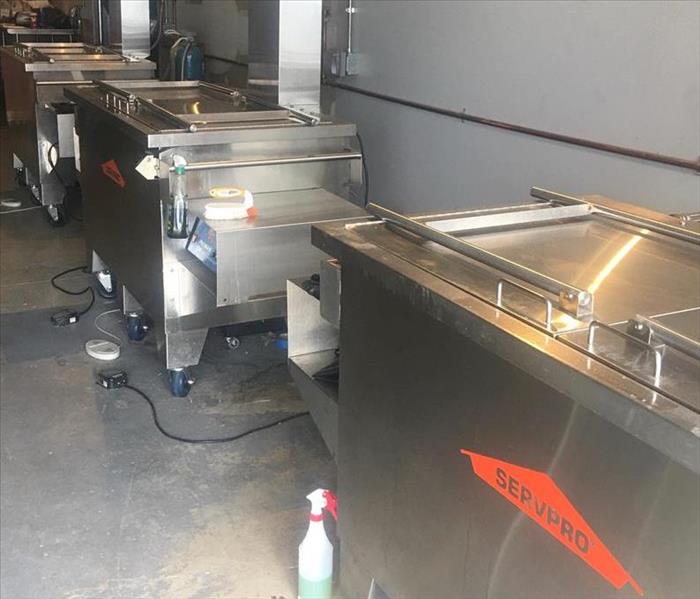 SERVPRO of Dale City/Lake Ridge and SERVPRO of Woodbridge/Lorton utilizes an ultrasonic cleaning machine to restore fire and soot damaged contents.
SERVPRO of Dale City/Lake Ridge and SERVPRO of Woodbridge/Lorton utilizes an ultrasonic cleaning machine to restore fire and soot damaged contents.
Having a fire in your home is a devastating event. Not only is the structure of your home affected, but your contents may be significantly damaged by fire, soot, or water as well.
Contents Restoration is an important business. It not only helps to restore damaged property, but it also helps restore people’s lives and livelihoods. While property damage can take many forms, what’s important to the owners is that their lives are returned to normal, and that they get their property back, as fast as possible. At SERVPRO of Dale City/Lake Ridge and SERVPRO of Woodbridge/Lorton, our fire restoration professionals are extensively trained in various cleaning techniques to save your belongings. We utilize our proprietary cleaning solutions made by SERVPRO chemists and specialized equipment such as the ultrasonic machine pictured here.
This ultrasonic machine employs microscopic bubbles created through cavitation (the formation of bubbles in water) to create vacuum energy in the form of heat and pressure. This process allows the water and cleaning chemicals to reach into the most elusive inner workings of even delicate items. Soot, dirt, and other contaminants are quickly and gently removed. With this machine, we can safely restore a wide range of contents including collectible items, antiques, window blinds, stuffed animals, and toys.
Benefits of Ultrasonics for Contents Restoration
The benefits of restoring property with Ultrasonics are two-fold:
- For Insurance Companies:The cost of restoring an item versus reimbursing the owner for the item’s full value is dramatically diminished. Example: a $1500 television can typically be cleaned and returned to the owner within days. The cost of cleaning that $1500 television for the Insurance could be only $300 (or whatever the restoration company decides to charge for their service). This represents a significant savings.
- For Property Owners: They get their original property back quickly. Whereas traditional cleaning methods can take weeks and cause additional property damage, with Ultrasonics most items can be cleaned within minutes. As a result, it’s no surprise that most people are happy simply getting their property back, especially if it means getting their lives back to normal as quickly as possible and even more so if the items have sentimental value.
Of course, when property can be returned depends on the type and severity of the damage. Certainly not every item, such as those that have been burned or melted in fires, can be restored, but a great number of items that would have traditionally been determined to be unrecoverable can now be quickly restored and returned to the owner with the use of ultrasonics cleaning equipment.
SMOKE ALARMS FOR PEOPLE WITH IMPAIRED HEARING
9/8/2021 (Permalink)
It is a well-known fact that working smoke alarms save lives and home fire sprinklers keep fires small, giving people more time to escape in a fire. However, people who are deaf or hearing impaired may not be able to depend on the traditional smoke alarm to alert them to a fire.
The National Fire Protection Association (NFPA) recommends installing smoke alarms in every bedroom. They should also be outside each sleeping area and on every level of the home, including a basement. For added safety, you may interconnect all the smoke alarms, meaning that if one sounds, they all sound. This gives more people more time to escape.
NFPA OFFERS THE FOLLOWING SAFETY TIPS:
- Smoke alarms and alert devices are available for people who are deaf or hearing impaired.
- Strobe lights flash when the smoke alarm sounds. The lights warn people of a possible fire.
- When people who are deaf are asleep, a pillow or bed shaker can wake them so they can escape. The shaker is activated by the sound of a smoke alarm.
- When people who are hard of hearing are asleep, an alert device that uses a loud, mixed, low-pitched sound can wake them. They may find a pillow or bed shaker helpful. These devices are triggered by the sound of the smoke alarm.
- Research the products and select the ones that best meet your needs.
WHERE TO FIND EQUIPMENT
There are several companies that offer these types of smoke alarm. Search home improvement store websites or use a general search engine to look for strobe light smoke alarms. You may also find smoke alarm accessories such as pillow or bed shakers, transmitters, and receivers. The NFPA recommends choosing devices that have the label of a recognized testing laboratory.
ALWAYS REMEMBER…
Test all smoke alarms in your home at least once a month using the test button. Just a few minutes a month may save the life of someone you love.
For further information, please visit https://www.nfpa.org/disabilities
What Are The Hidden Residential Fire Hazards?
9/1/2021 (Permalink)
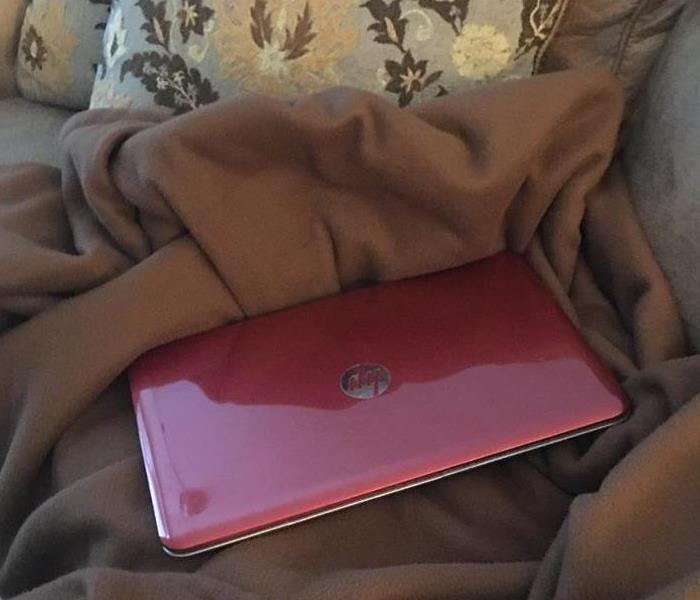 When your laptop is overheating, be sure to keep it on a hard surface instead of on a blanket, sofa, or any type of fabric.
When your laptop is overheating, be sure to keep it on a hard surface instead of on a blanket, sofa, or any type of fabric.
According to the National Fire Protection Agency, residential fires account for 27% of all fires. Most of these fires and fire casualties result from five causes: cooking, heating equipment, electrical distribution, and lighting equipment, intentional fire setting, and smoking materials. Over the five-year period of 2014–2018 in total, cooking was the leading cause of home fires and home fire injuries. Smoking materials caused the most home fire deaths.
Of these five causes, the residential fire hazards that first come to mind are likely the stove and electrical wiring, objects that involve an open flame or electricity. However, there are several fire hazards in the home that often go unnoticed. Below are 3 hidden, residential fire hazards that are important to recognize to protect your home:
Remember the classic science experiment of starting a fire using a magnifying glass? While it is a rare occurrence, other types of glassware in the home, including vases and drinking glasses, can start a fire. All that’s needed for a fire to ignite is a focused ray of light to pass through a piece of glassware and focus on a nearby flammable object. Therefore, it is a good idea to keep glassware away from windows.
The whirring sound of the fan kicking in, the surface of your desk becoming warm. These are the signs that your laptop is working hard and overheating. When your laptop is overheating, be sure to keep it on a hard surface instead of on a blanket, sofa, or any type of fabric, as they are flammable and could increase the risk of a fire starting.
Faulty electrical wiring usually comes to mind as a hazard when we think of causes of fires in the home, but it is beneficial to consider electrical outlets to be equally dangerous. If you’ve ever tried to plug a cord into an outlet and watched it immediately fall out, you’ve experienced the effects of loose blades inside of an electrical outlet. An electrical outlet’s blades naturally loosen over time and when they become too loose, they can conduct enormous heat, risking a fire.
Residential fires, igniting and spreading quickly, can pose a serious threat to the safety of those living in your home and risk devastating fire damage. To protect your home from a dangerous fire, practice caution and keep hidden fire hazards in the back of your mind.
If a fire ignites in your home, leaving fire damage in its path, don’t hesitate. Call our Team at SERVPRO of Dale City/Lake Ridge and SERVPRO of Woodbridge/Lorton today. You can trust our fire damage experts and our fire, smoke, and soot restoration services to restore damaged areas of your home and make it “Like it never even happened.”
Commercial Fire Damage Restoration in Northern Virginia
7/21/2021 (Permalink)
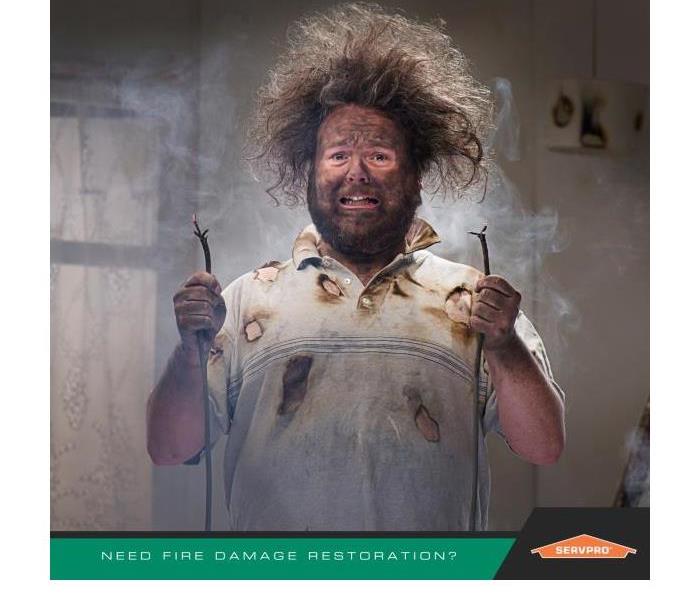 One of the most frustrating aspects of fire damage can be the smell it leaves behind.
One of the most frustrating aspects of fire damage can be the smell it leaves behind.
The Northern Virginia area represents an excellent opportunity for your business. Whether you are a tax preparer, a hairdresser, or a clothing boutique, the numerous cities and communities in Northern Virginia are attractive for many entrepreneurs. As you put your business plan on paper, you need to account for unexpected events that might derail your projections. Most business owners are sure to include expenses associated with weather events, but many fail to consider mechanic or human missteps in their contingency plan.
Whether your business in Northern Virginia faces fire damage or an emergency brought on by mother nature, a professional restoration service should always have a spot in your emergency preparedness plans. Our team at SERVPRO of Dale City/Lake Ridge and SERVPRO of Woodbridge/Lorton is ready to help whenever you face adversity, and we come to you as soon as we can. By directly calling our round-the-clock emergency line, you access a wealth of knowledge and expertise willing to work for you and reduce your loss. We have been serving the areas of Dale City, Lake Ridge, Woodbridge, Lorton, Montclair, Dumfries, Occoquan, Triangle and Quantico since 2004.
Take, for example, a small electrical fire that escalates and burns a section of your office. Although the visible trace of the flames appears small, there may be a residue that is not obvious to the naked eye. Our SERVPRO team arrives with specialized equipment designed to identify those hidden threats. Very often, the sprinklers that ultimately save your workspace wreak havoc as well, leaving your work area a mix of smoke, soot, and extinguishing chemicals that help control the fire. It is our job to understand the behavior of each of these remnants and tackle them individually.
One of the most frustrating aspects of fire damage can be the smell it leaves behind. Well, beyond the cleanup and disinfecting process, business owners are constantly reminded of the event just by breathing in its foul smell. At SERVPRO, we seek to understand the nature of the smell and make an informed decision as to its removal. In some instances, odor counteracting pellets are sufficient to mask the odors; in others, air scrubbers are to neutralize the smell, and in more extreme cases, we may have to resort to an ozone generator to eradicate the odor. Whatever your situation, our team has the resources to identify your needs and develop a plan to meet them.
Our team at SERVPRO of Dale City/Lake Ridge and SERVPRO of Woodbridge/Lorton is at your side when your business needs it. Call us at 703-583-8484 whenever you face an emergency and allow us to help you get back to work. Together, we can leave your offices “Like it never even happened.”
Fire Pit Tip Safety Tips
4/1/2021 (Permalink)
Spring has fully arrived here in Northern Virginia and Summer is just around the corner. In our area it’s a tradition to enjoy the cooler nights outside around a homemade fire pit! Many of us are looking forward to spending time gathering around them to enjoy time with family and friends. Before you start dreaming of movies on the lawn, moonlit nights, and s’mores, take a moment to check out some of these tips from Allstate to remember.
Backyard Fire Pit Safety Tips:
- Whether you prefer a built-in or portable fire pit, choose one that is not too large for the area. The pit should be a minimum of 10 feet away from any structures or combustible materials as well as away from trees, fences, sheds, power lines, and telephone wires.
- Make certain that the seating area is large enough and properly placed for comfort and ventilation.
- Check wind direction before lighting a fire.
- Don’t use flammable fluids (gasoline, lighter fluid, etc.) to light or relight fires.
- To start the fire, use a lighter to ignite crumpled pieces of paper covered with small sticks. Then, add larger sticks and a log or two to keep it burning.
- Burn only dry material. Damp material will create excess smoke.
- Don’t wear flammable clothing (like nylon) or any loose-fitting clothing.
- Never leave the fire unattended and keep pets and children far away from the fire as they will be attracted to it.
- Keep a fire extinguisher, garden hose, or bucket of water nearby.
- As the fire dies down, use a shovel, and spread out the ashes to allow them to cool down. Then slowly pour water over those ashes and watch them closely to be sure that no burning embers remain or reignite. Put the cooled ashes in a specially designated ash storage metal can.
CELEBRATE SAFELY THIS HOLIDAY SEASON
12/1/2020 (Permalink)
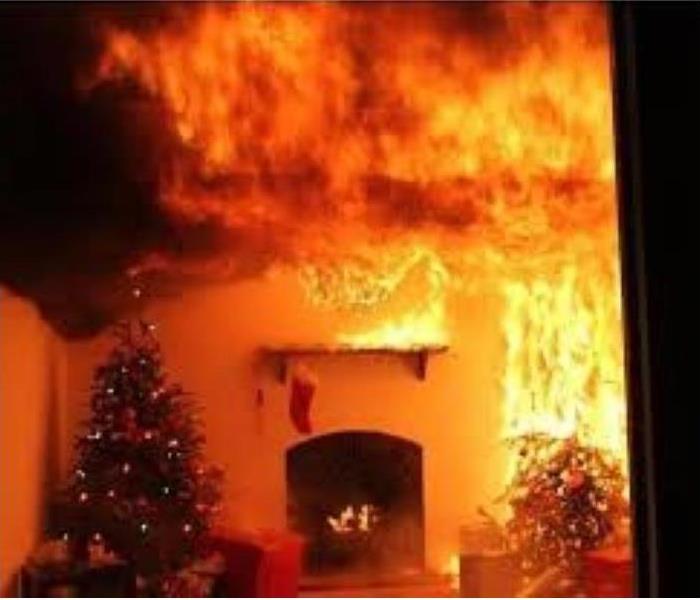 'Stay Safe' when decorating for the holidays.
'Stay Safe' when decorating for the holidays.
As a local SERVPRO fire restoration specialist, our team at SERVPRO of Dale City/Lake Ridge and SERVPRO of Woodbridge/Lorton, urges everyone in Northern Virginia to use common sense and caution to help control the risk of holiday season home fires.
In a year when large holiday gatherings may not be possible, we understand that a focus on family decorating traditions and more intimate celebrations may take on extra significance. It’s as important to keep safety top of mind with a small family gathering as it is with a large holiday party. We all enjoy bringing the radiance of the holiday season to our homes with Christmas trees or menorahs and candlelight, however these statistics from the U.S. Fire Administration show how easy it is for home decorating to turn into a home disaster.
- The top three days for home candle fires are Christmas, New Year’s, and New Year’s Eve.
- More than half of the home decoration fires in December are started by candles.
- A heat source too close to the Christmas tree causes one in every four winter fires.
- On average, one of every 52 reported home Christmas tree fires resulted in death.
In addition to exercising caution with candles and heat sources, it is important to follow manufacturers’ guidelines for holiday lighting. According to the National Fire Protection Association, electrical distribution or lighting equipment was involved in 44% of home Christmas tree fires. Though Christmas tree fires may not be common, they can be devastating to more than the house itself. They can destroy irreplaceable photos, mementos, and family heirlooms and even cost lives. To help keep your holidays bright and your home and family safe, use common sense with candles and tree placement, and follow these important home decorating guidelines.
- Only use decorations that are flame-retardant or not flammable.
- Check holiday lights each year for frayed wires or excessive wear.
- Do not link more than three strands of holiday lights.
In 2020, a year when so many of the things we take for granted have changed, we know people will still come together – in person or virtually – to celebrate family and holiday traditions. ‘Stay safe’ has become a common expression in the context of public health, but this holiday season, we urge all Northern Virginia area home and business owners to think about ‘staying safe’ in their homes as they prepare for and enjoy the holiday season.”
SERVPRO is an industry leader and provider of fire and water cleanup and restoration services. For more fire prevention and fire safety tips and information about fire and water damage restoration services, please visit our website at www.SERVPROdalecitylakeridge.com. For more information on SERVPRO of Dale City/Lake Ridge, please contact us directly at 703-583-8484.
KITCHEN CAUTIONS FOR YOUR THANKSGIVING FEAST
11/23/2020 (Permalink)
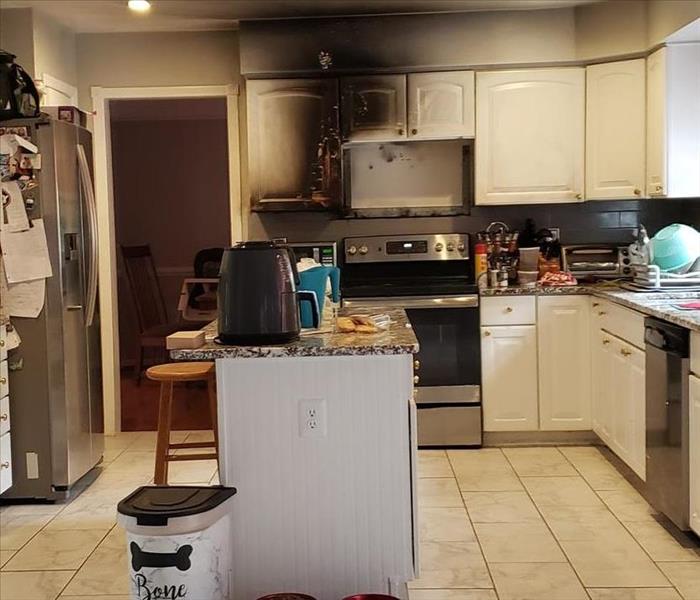 Smother grease fires by sliding the lid over the pan and turn off the stovetop. Leave the pan covered until it is completely cooled.
Smother grease fires by sliding the lid over the pan and turn off the stovetop. Leave the pan covered until it is completely cooled.
According to the National Fire Protection Agency, cooking fires are the number one cause of home fires and injuries. The leading cause of fires in the kitchen is unattended cooking. It’s important to remain alert to prevent holiday cooking fires.
Around the holidays each year, families gather to celebrate by preparing a delicious feast. Unfortunately, not everyone practices safe cooking habits. Whether you are an experienced chef of the family or a beginning student to the culinary art of boxed stuffing, safety should always be your first focus when preparing a meal.
To ensure you and your kitchen survive meal preparation, keep in mind the following safety tips:
- Be on alert! If you are sleepy or have consumed alcohol, do not use the stovetop or oven.
- At all time, remain in the kitchen while you are frying, grilling, boiling, broiling, or using an air fryer to cook your food.
- If you are simmering, baking, or roasting food, check it regularly, remain in the kitchen while the food is cooking, and use a timer to remind you that the oven or stove is in use.
- Keep oven mitts, wooden utensils, food packaging, hand towels or anything that can catch fire, away from the stovetop.
Consider the following safety protocols to help keep you and your family safe if you do have a cooking fire:
- Simply GET OUT! Please do not forget your pets as well. Close the door behind you when you leave to help contain the flames.
- Call 9-1-1 or the local emergency number after you get out safely.
- For an oven fire, turn off the heat and keep the oven door closed.
- If you try to fight the fire, make certain others are getting out and you also have a clear path to safety.
- When you’re cooking with grease, make sure you have a lid nearby to smother small grease fires. Smother the fire by sliding the lid over the pan and turn off the stovetop. Leave the pan covered until it is completely cooled.
Our team at SERVPRO of Dale City/Lake Ridge and SERVPRO of Woodbridge/Lorton wish you and your families a safe and happy Thanksgiving!
REMEMBER "PASS" WHEN USING A FIRE EXTINGUISHER
11/11/2020 (Permalink)
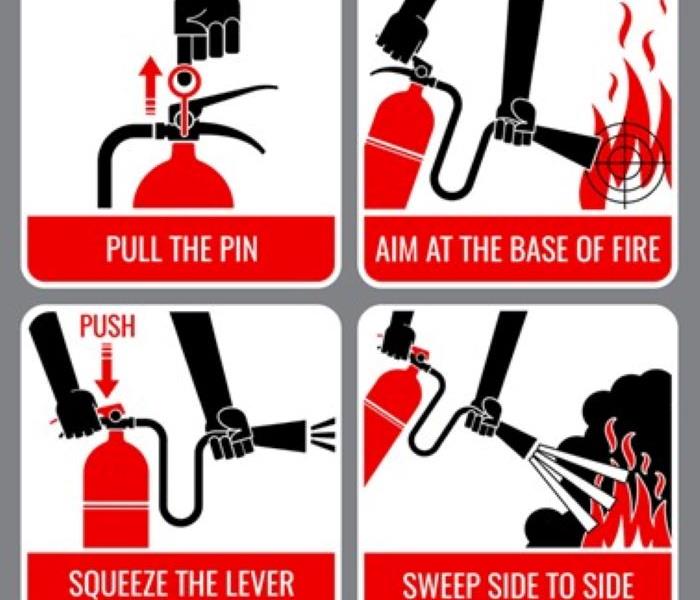 When using a fire extinguisher remember PASS, point, aim, squeeze, and sweep.
When using a fire extinguisher remember PASS, point, aim, squeeze, and sweep.
It’s hard to believe that the holidays are just around the corner and before we know it, 2021 will be here! With Thanksgiving in a couple of weeks we wanted to take a moment to help you keep your family and friends safe during this festive season.
Did you know cooking equipment is the leading cause of residential fires? As the holiday season begins and you find yourself in the kitchen more often while hosting friends and family, fire precautions should be top of mind.
When used correctly, a portable fire extinguisher can be a life and property saving tool. In order to operate a fire extinguisher, the NFPA suggests remembering the work PASS.
- PULL the pin. Hold the nozzle pointing away from you and release the locking mechanism.
- AIM Point the fire extinguisher at the base of the fire.
- SQUEEZE the lever slowly and evenly.
- SWEEP the nozzle from side-to-side.
Read the instructions on the fire extinguisher and become familiar with them before a fire breaks out. Encourage your family members and co-workers to do the same.
from our Team at SERVPRO of Dale City/Lake Ridge and SERVPRO of Woodbridge/Lorton, we wish all of you a happy and safe Thanksgiving!
Tips for a Fire-Free Fall and Halloween
10/28/2020 (Permalink)
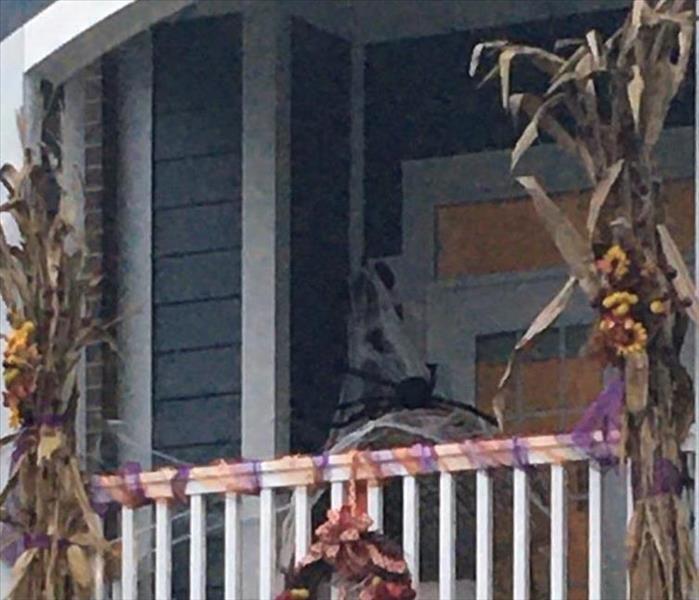 Fall decorations, like dried flowers, cornstalks, and hay bales are highly flammable.
Fall decorations, like dried flowers, cornstalks, and hay bales are highly flammable.
The fall season brings cooler temperatures, beautiful colors, and an abundance of outdoor activities including Halloween and Fall Festivals. Do some preliminary planning this season to help ensure it is safe and fire-free.
- Fall decorations, such as dried flowers, cornstalks, and hay bales are highly flammable. Keep these and other decorations away from open flames and heat sources, including outdoor fire pits, light bulbs, and heaters.
- Keep your home brightly lit indoors and outside. Check the lighting for your front entryway or porch and replace any damaged bulbs that may have burned out.
- Be sure that the extension cords you use outside are rated for outdoor use. Also, don't overload extension cords. Your cord should be the correct amps for what you're plugging into it.
- Remove or highlight potential tripping hazards, such as electrical cords. Clear debris and other obstacles from your lawn, sidewalks, and steps.
- Keep emergency exits clear of decorations so nothing blocks escape routes.
- Teach children to stay away from open flames. Be sure they know how to stop, drop, and roll if their clothing catches fire.
- Remember safety first when choosing a Halloween costume. Consider avoiding billowing fabric along with making certain nothing impairs your vision.
- It is safest to use a flashlight or battery-operated candle in a jack-o-lantern. Use extreme caution if using a real candle.
As always, if a fire, smoke, or soot invades your home or business, please give our team at SERVPRO of Dale City/Lake Ridge and SERVPRO of Woodbridge/Lorton a call. We are available 24/7 including holidays.
OCTOBER 4-10 IS FIRE PREVENTION WEEK
10/6/2020 (Permalink)
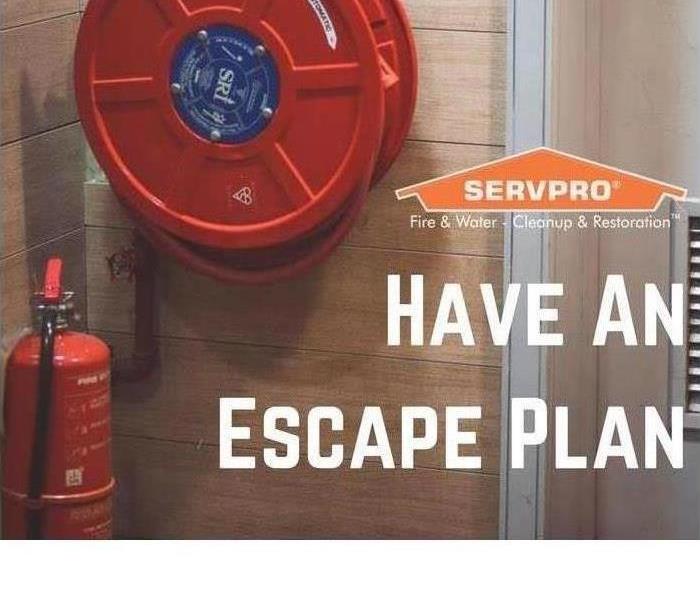 Have a fire escape plan!
Have a fire escape plan!
October 4-10, 2020 is Fire Prevention Week. The National Fire Protection Association (NFPA) sets aside a specific week each October to focus on fire prevention. “Serve Up Fire Safety in the Kitchen!” is the theme for 2020. This topic works to teach everyone about the simple but important actions they may take to keep themselves, and those around them, safe in the kitchen.
According to NFPA, cooking is the number one cause of home fires and home fire injuries. Unattended cooking is the leading cause of fires in the kitchen. The Agency notes that once a fire alarm goes off “you could have less than two minutes to get out safely,” yet only 8 percent of people surveyed said getting out was the first thought they had after hearing a fire alarm go off. Creating, implementing, and practicing a fire escape plan for your home or business may be the difference between safety and tragedy. Don’t hesitate, make a plan today!
As the #1 choice in cleanup and restoration, SERVPRO stands on over 50 years of experience and expertise to help ensure you stay safe, informed, and ready for any disaster that comes your way. The time to prepare is now by making a fire escape plan and checking your smoke alarm batteries. Call our Team at SERVPRO of Dale City/Lake Ridge and SERVPRO of Woodbridge/Lorton at 703-583-8484 to make sure your home and business are “Ready for whatever happens.” We’re always here to help!
Did you know that there are various types of soot associated with fires?
9/21/2020 (Permalink)
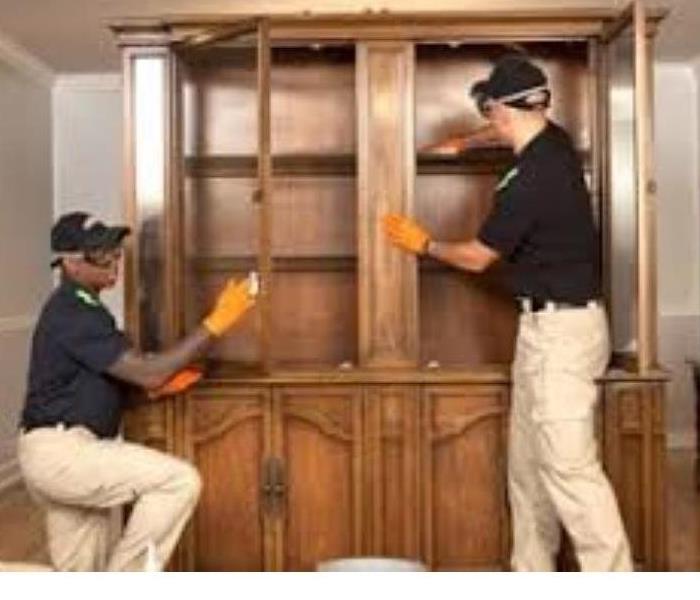 Soot often continues to spread after the fire is extinguished and may affect all areas of your home or business.
Soot often continues to spread after the fire is extinguished and may affect all areas of your home or business.
Fire damage to your northern Virginia home or business can be devastating. It is easy to see the aftermath of the flames as they have engulfed your belongings and building materials in its wake. One thing that may be more encompassing than the flames is the soot released by the burning materials. Soot is acidic by nature and may cause tremendous damage as it continues to degrade metals, finish coatings, and electronics until it is removed. The problem of soot removal is that it is sometimes hard to see and there are different types that require specific cleaning methods. Soot also continues to spread until it exhausts its energy, moving towards colder temperatures, often affecting all areas of your home or business, even areas not affected directly by the fire. Fortunately, our Team at SERVPRO of Dale City/Lake Ridge and SERVPRO of Woodbridge/Lorton is familiar with all types of soot and have the expertise needed to make it “Like it never even happened.”
Fuel oil soot – Oil Heating Systems are most common for “puffbacks”. A puffback is typically caused by excess fuel in the burner chamber that, upon ignition, causes a small explosion, sending soot throughout your vent system. This type of soot is generally grey to black and greasy in nature making it streaky and hard to clean when it is fresh and, over time, it can even bond to surfaces making it unable to be fully cleaned.
Protein residues – Protein residues are most often seen in kitchen fires. Unlike what most people consider soot to look like, it is yellow or amber in color as it coats and may be hard to see as a slight discoloration on walls, cabinets, and appliances. Because it is very hard to see this soot, the telltale sign may be a lingering odor issue if all surfaces are not thoroughly cleaned.
Wet soot – Wet smoke is typically left behind in a slow burning, low-heat fire. It is usually black and leaves behind a sticky and this residue that can be easily smeared during clean up. These are usually smoldering fires and can be commonly caused by plastic or rubber materials.
Dry soot – Opposite of wet smoke, dry smoke is most common during high heat, fast burning fires. Fuels such as wood and paper cause dry soot. Dry soot can be easier to clean, but due to the fact it has dry, fine particles, it can fall into cracks and crevices, making it not only hard to see, but harder to clean.
If you have a fire or soot emergency, give our Team at SERVPRO of Dale City/Lake Ridge and SERVPRO of Woodbridge/Lorton. We’re here to help 24/7/365.
WHAT NOW? THE GUIDE TO KNOWING THE NEXT STEP FOLLOWING A FIRE.
8/10/2020 (Permalink)
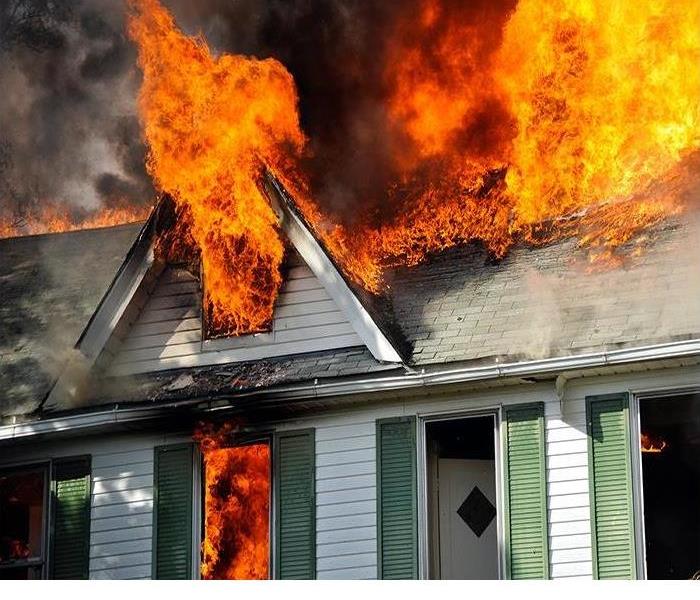 What is the next step to take following a fire?
What is the next step to take following a fire?
- *Safely* - Take pictures of the damage
- Make certain your property is secured
- If Rental Property, Contact Owner/Landlord Immediately
- Call your insurance company
- Contact family/friends to let them know you are okay
- Locate Emergency Accommodations
- Keep all receipts (Insurance dislocation reimbursement)
STEPS TO FOLLOW: THE FIRST DAYS
- Notify utility companies of the incident
- Contact your child(ren)’s school of temporary address/unusual stress awareness
- Contact the local police department to let them know your property is temporarily vacant
- Allow SERVPRO of Dale City/Lake Ridge and SERVPRO of Woodbridge/Lorton to help you make it “Like it never even happened.”
REPLACING DOCUMENTS AND RECORDS
Driver’s License
Passports
Titles/Deeds
Wills
Auto Registration
Birth/Marriage/Death Certificates
Social Security/Medicare Cards
Insurance Policies (Auto/Home)
Mortgage Papers
Military Papers (DD-214)
Debit/Credit Cards
Banking Information
Prepaid Burial Contract
Medical Records
Investment Documents
TAKE CARE OF YOURSELF AND FAMILY
Contact your local disaster relief service, such as the American Red Cross or the Salvation Army. They will help you find a place to stay and to find food, clothing, and medicine. Make certain that you have a safe place to live temporarily. Get plenty of rest and ask for help. Do not try to do it all alone.
“Do not eat, drink or breather in anything that has been near the flame, smoke, soot, or water used to put out the fire.”
For further information or if you need assistance, please contact our team at SERVPRO of Dale City/Lake Ridge and SERVPRO of Woodbridge/Lorton (703-583-8484). We’re always here to help.
Sprinkler Maintenance...Where to Begin
6/19/2020 (Permalink)
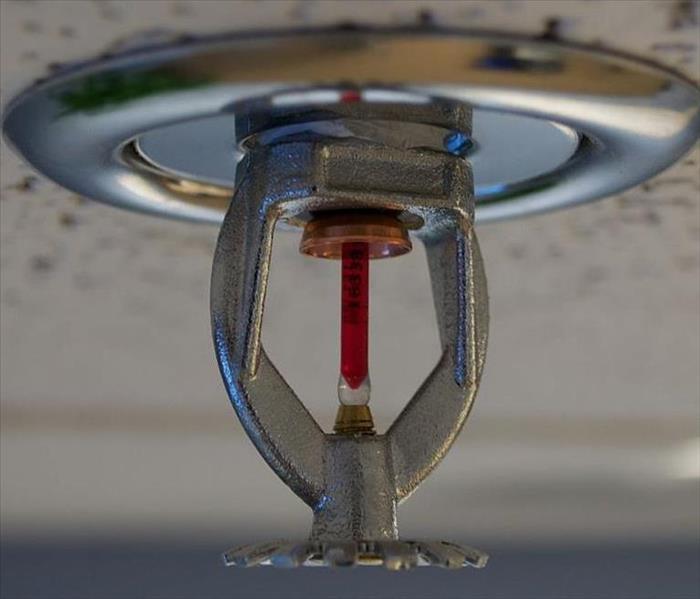 Having a well-maintained sprinkler system can help to ensure that the sprinklers work in the event of a fire.
Having a well-maintained sprinkler system can help to ensure that the sprinklers work in the event of a fire.
The sprinklers in your business in the Dale City, Lake Ridge, Woodbridge, and Lorton areas of Northern Virginia can help to slow or stop the spread of a fire. Having a well-maintained sprinkler system can help to ensure that the sprinklers work in the event of a fire. However, many business owners and managers don't know where to begin when it comes to sprinkler maintenance.
1. Keep Your Sprinklers Clean
Dirt and dust can build up on your sprinklers over time, making it more likely for the sprinklers to malfunction. In some cases, your sprinklers may accidentally activate if there is an excessive amount of dirt and dust around the sprinklers and smoke detectors. As a result, you may need to contact water damage restoration experts if your building floods. In order to prevent your building's sprinklers from turning on unnecessarily, it can be helpful to frequently clean off any dirt and dust from both the sprinklers and the smoke detectors in your business.
2. Know the Signs of a Leak
If sprinkler maintenance is ignored, a leak can often occur. A leaky sprinkler may sometimes be difficult to notice in basements, attics, and other areas that you may not often frequent. Since you may not always see the results of a leaky sprinkler immediately, it can be helpful to take note of the average cost of your water bills. An unexplained spike in water usage could be an indicator that there is a leaky sprinkler somewhere in your building.
3. Employ Professionals for Regular Maintenance
Even though there are various steps you can take to keep your sprinklers well-maintained, there are some problems that you may not notice until it's too late. Professionals can perform regular maintenance on your building's sprinkler system to ensure that your sprinklers will function if a fire occurs. Additionally, experts can help to make sure your system doesn’t turn on when it shouldn't.
Sprinkler maintenance is a useful way to ensure your building is prepared for a fire. Keeping your sprinklers clean, knowing the signs of a leak and having professionals perform routine maintenance can help to keep your fire sprinklers working their best.
Fire Escape Plans are a MUST!
11/27/2019 (Permalink)
When a fire occurs, your ability to get out is significantly greater with advanced warning from smoke alarms and with a fire escape plan in place. Seven people die every day from a home fire and the thought of that is scary in itself.
Fire is extremely unpredictable and can spread so fiercely that you are often left with a mere 2 minutes to exit safely. Having an escape plan and practicing with your family could be a lifesaver! Design an escape plan for each room in the home and discuss regularly. Have fire drills at home to make sure that everyone is aware and remembers how to respond and where they should be going.
Children in the home should have visual aids and have at least two exit plans. There should be a meeting point for the entire family in a safe place away from the home.
Placing a working flashlight in each room is a great way for anyone who would be trapped to signal to firefighter in an emergency. This will allow the firefighters to locate them in a timely manner even through the smoke.
SERVPRO® of Dale City/Lake Ridge and SERVPRO® of Woodbridge/Lorton offer free emergency ready plans in case of a disaster, 703.583.8484.
What is the leading cause of home fires?
11/15/2019 (Permalink)
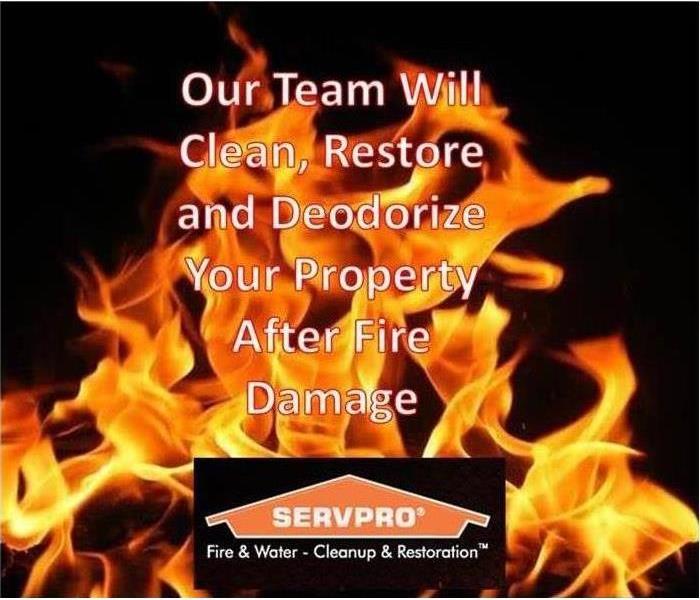 In 2017 51.6% of residential building fires were caused by Cooking
In 2017 51.6% of residential building fires were caused by Cooking
Did you know cooking equipment is the leading cause of residential fires? As we get near the start of the holidays, fire precautions should start as well.
A property owner experiences a flood of emotions when a fire ravages their business or home. Fear, uncertainty, stress and doubt about the future of the property can be overwhelming to the property owner long after the flames have been extinguished and the smoke has cleared.
After the first wave of heroes have rescued the property, let your local SERVPRO® of Dale City/Lake Ridge Professional help you restore the property. Combining rapid response, the utmost professionalism and open communication, we strive to restore not only the home or business, but to restore the customer’s peace of mind, as well.
- The National Fire Protection Association (NFPA) offers the following eye-opening statistics on fires:
- 475,500 structure fires were reported in the United States in 2016.
- These fires caused $7.9 billion in property damages.
- One structure fire was reported every 66 seconds.
If the unthinkable happens and a fire strikes, give the experts at your local SERVPRO® of Dale City/Lake Ridge a call at 703-583-8484. We’ll help make it “Like it never even happened.”
Safety First Before the Feast
11/15/2019 (Permalink)
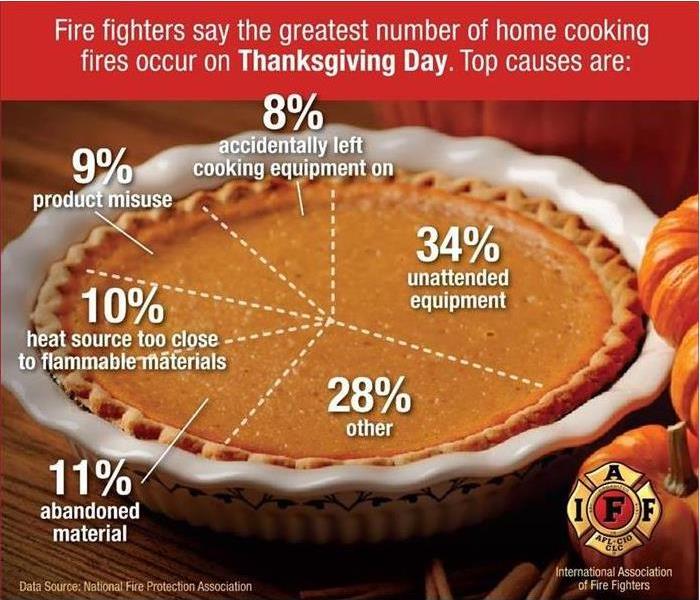 Home fires can happen at any time, but they generally increase during the fall and winter.
Home fires can happen at any time, but they generally increase during the fall and winter.
Each November, families gather to celebrate Thanksgiving by preparing a delicious feast, but if you don’t practice safe cooking habits, your happy holiday could become hazardous very quickly.
According to the National Fire Protection Association, cooking is the main cause for home fires and injuries, with Thanksgiving being the peak day for cooking-related fires.
Review the following safety tips to help ensure you can enjoy a safe holiday.
- Never leave cooking food unattended–stay in the kitchen when frying, grilling or broiling food. If someone must leave the kitchen for even a short period of time, they should turn off the stove.
- Check food regularly while cooking and remain in the home while cooking. Use a timer as a reminder that the stove or oven is on.
- Keep the kids away from the cooking area. Enforce a “kid-free zone” and make them stay at least three feet away from the stove.
- Keep anything flammable–pot holders, oven mitts, wooden utensils, paper or plastic bags, food packaging and towels or curtains—away from the stove, oven or any other appliance in the kitchen that generates heat.
- Do not wear loose clothing or dangling sleeves while cooking.
- Clean cooking surfaces on a regular basis to prevent grease buildup.
- Purchase a fire extinguisher to keep in the kitchen. Contact the local fire department for training on the proper use of extinguishers.
- Always check the kitchen before going to bed or leaving the home to make sure all stoves, ovens, and small appliances are turned off.
- Install a smoke alarm near the kitchen, on each level of the home, near sleeping areas and inside and outside bedrooms. Use the test button to check it each month. Replace all batteries at least once a year.
Your local SERVPRO® of Dale City/Lake Ridge Professionals wish you a safe and happy holiday season.
Fires are Preventable!
9/25/2019 (Permalink)
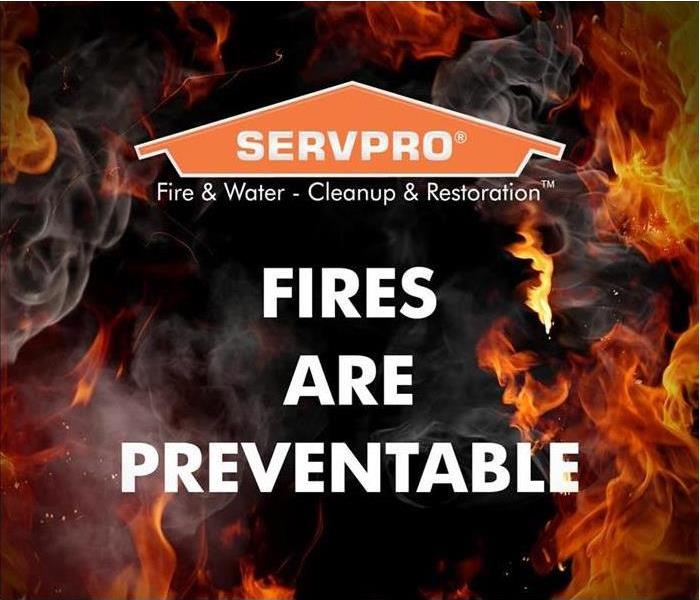 Be sure to visit Ready.gov for more helpful information on how to prevent fires in your home!
Be sure to visit Ready.gov for more helpful information on how to prevent fires in your home!
When it comes to your or your insured’s properties, there are certain safety precautions that can be taken to help prevent fires. Ready.gov shares the following tips on home fire prevention.
Electrical and Appliance Safety
Frayed wires can cause fires. Replace all worn, old or damaged appliance cords immediately and do not run cords under rugs or furniture.
If an appliance has a three-prong plug, use it only in a three-slot outlet. Never force it to fit into a two-slot outlet or extension cord.
Immediately shut off, then professionally replace, light switches that are hot to the touch and lights that flicker.
Fireplaces and Wood-stoves
Inspect and clean wood-stove pipes and chimneys annually and check monthly for damage or obstructions.
Use a fireplace screen heavy enough to stop rolling logs and big enough to cover the entire opening of the fireplace to catch flying sparks.
Make sure the fire is completely out before leaving the house or going to bed.
PREPAREDNESS FOR PETS
8/27/2019 (Permalink)
 Have you accounted for Fido or feline when emergency planning?
Have you accounted for Fido or feline when emergency planning?
Pets are just as important as any family member to most people, so why would you not make them a part of your preparedness planning? There are several things you can do to make sure they stay safe as well during an emergency.
Pet Emergency Kit
Ready.gov/animals lists the below items as essential to building your Pet Emergency Kit.
Food - At least a three day supply in an airtight, waterproof container.
Water - At least three days of water specifically for your pets.
Medicines and medical records
Important documents Registration information, adoption papers and vaccination documents. Talk to your veterinarian about microchipping and enrolling your pet in a recovery database.
First aid kit Cotton bandage rolls, bandage tape and scissors; antibiotic ointment; flea and tick prevention; latex gloves, isopropyl alcohol and saline solution. Including a pet first aid reference book is a good idea too.
Collar or harness with ID tag, rabies tag and a leash
Crate or pet carrier Have a sturdy, safe crate or carrier in case you need to evacuate. The carrier should be large enough for your pet to stand, turn around and lie down.
Sanitation Pet litter and litter box if appropriate, newspapers, paper towels, plastic trash bags and household chlorine bleach.
A picture of you and your pet together If you become separated, a picture of you and your pet together will help you document ownership and allow others to assist you. Add species, breed, age, sex, color and distinguishing characteristics.
Familiar items Familiar items, such as treats, toys and bedding can help reduce stress for your pet.
Evacuations
While practicing fire escape or evacuation plans, be sure to include pets. If an evacuation happens, don’t leave pets behind as they can be lost or injured.
Identification
Microchipping pets is a great way to locate them. Most veterinary clinics and shelters have scanners that will read the microchip information to help find a pet’s owners.
Be sure to take four-legged friends into consideration when planning for emergencies. Visit ready.gov/ animals for further tips and safety precautions to think about for you or your insured’s families’ pets, or your tenant’s pets’ during a disaster.
How to classify a fire
7/17/2019 (Permalink)
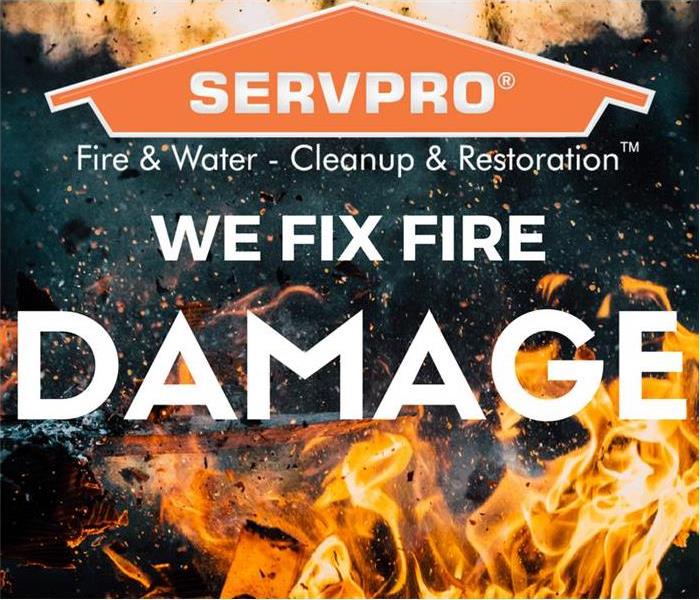 Here to help through your fire damage.
Here to help through your fire damage.
Fire Damage Classifications
Removal of property from a home or business depends on the type of damage sustained to the structure and personal items. Our team is trained to determine whether the cause was the heat and flames, smoke residues, or as a result of the effects to extinguish the fire. Each type of damage will also fall into three levels or categories of damage: Minor, Medium, and Major.
With Minor Damage
- There is little need for removal.
- The fire was restricted to a single room, quickly extinguished and small.
- Only small items like dish towels and perhaps the pot or pan where the fire started must be disposed of and replaced.
- Most of the restoration involves light cleaning of residue covered ceilings, walls, floors, counters and cabinets.
With Medium Damage
- More property is removed.
- The fire was larger, spread into other parts of the home, and took longer to extinguish.
- Larger items such as furniture and drywall panels are physically damaged and require disposal.
- The cleaning method requires stronger chemicals and tools like scrub brushes.
- Odors are very noticeable and require further cleaning to eliminate them.
With Major Damage
- Items near the origin of the fire are severely burnt and need immediate removal and disposal.
- Structural components such as framing also suffer physical damage.
- Smoke residues are so thick that some items may need to be cleaned using ultrasonic equipment or may not be able to be completely cleaned and require replacement.
- Odors may be so strong that eliminating them can be more expensive than the option of replacement.
Removal of contents does not necessarily mean they must be disposed. We can move salvageable items or those that simply need cleaning to either an on-site storage container on their property or to storage at our facility while repairs are being completed.
We’re always here to help. Our goal is to address your restoration needs as professionally and quickly as possible. The sooner you contact us, the sooner we can get your property and life back to “Like it never even happened".
Celebrate Safely this Holiday Season
11/30/2018 (Permalink)
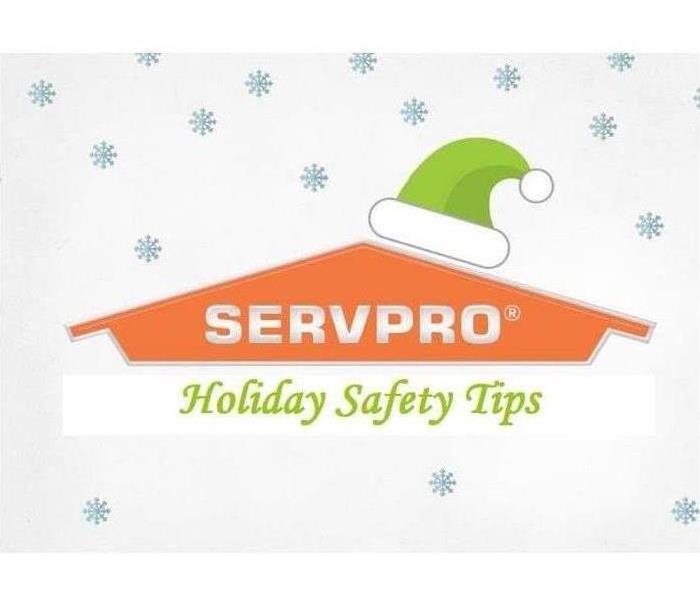 Be safe during this Holiday Season!
Be safe during this Holiday Season!
Pretty lights, candles and decorations are just a few of the items bringing charm and cheer to the holiday season— however, if they are not used carefully your holidays may go from festive to frightening.
The American Red Cross offers the following safety tips to help greatly reduce the fire risk in your home or business this holiday season.
- Place Christmas trees, candles and other holiday decorations at least three feet away from heat sources like fireplaces, portable heaters, radiators, heat vents and candles.
- Make sure light strings and other holiday decorations are in good condition. Do not use anything with frayed electrical cords and always follow the manufacturer’s instructions.
- Always unplug tree and holiday lights before leaving the property or going to bed.
- Never use lit candles to decorate a tree. Always extinguish candles before leaving the room or going to bed.
- Use only sturdy tree stands designed not to tip over. Keep curious pets and children away from Christmas trees.
- Keep anything that can catch fire—pot holders, oven mitts, wooden utensils, paper or plastic bags, food packaging and towels or curtains—away from your stove top.
- Designate one person to walk around your property to ensure all candles and smoking materials are properly extinguished after guests leave.
Your local SERVPRO® of Dale City/Lake Ridge Professionals wish you a safe and happy holiday season!
Holiday Cooking
11/8/2018 (Permalink)
Each November, families gather to celebrate Thanksgiving by preparing a delicious feast, but if you don’t practice safe cooking habits, your happy holiday could become hazardous very quickly.
According to the National Fire Protection Association, cooking is the main cause for home fires and injuries, with Thanksgiving being the peak day for cooking-related fires.
Review the following safety tips to help ensure you can enjoy a safe holiday.
- Never leave cooking food unattended–stay in the kitchen when frying, grilling or broiling food. If someone must leave the kitchen for even a short period of time, they should turn off the stove.
- Check food regularly while cooking and remain in the home while cooking. Use a timer as a reminder that the stove or oven is on.
- Keep the kids away from the cooking area. Enforce a “kid-free zone” and make them stay at least three feet away from the stove.
- Keep anything flammable–pot holders, oven mitts, wooden utensils, paper or plastic bags, food packaging and towels or curtains—away from the stove, oven or any other appliance in the kitchen that generates heat.
- Do not wear loose clothing or dangling sleeves while cooking. n Clean cooking surfaces on a regular basis to prevent grease buildup.
- Purchase a fire extinguisher to keep in the kitchen. Contact the local fire department for training on the proper use of extinguishers.
- Always check the kitchen before going to bed or leaving the home to make sure all stoves, ovens, and small appliances are turned off.
- Install a smoke alarm near the kitchen, on each level of the home, near sleeping areas and inside and outside bedrooms. Use the test button to check it each month. Replace all batteries at least once a year.
All of us here at SERVPRO® of Dale City/Lake Ridge wish you and your family a safe and happy holiday season.
Fire Extinguisher Safety
11/8/2018 (Permalink)
Do you know how to use a fire extinguisher?
Remember the phrase P.A.S.S.
- .. Pull the pin. This will also break the tamper seal.
- .. Aim low, pointing the extinguishernozzle (or its horn or hose) at the base of the fire.
- .. Squeeze the handle to release the extinguishingagent.
- .. Sweep from side to side at the base of the fire until it appears to be out.
Do you know what Class fire extinguisher you should have?
Class A: This is the most common extinguisher and can be used to put out fires in ordinary combustibles such as cloth, wood, rubber, paper and many plastics.
Class B: Used on fires involving flammable liquids, such as grease, gasoline and oil.
Class C: Designed for fires involving appliances, tools, or other equipment electrically energized or plugged in.
Class D: For use on flammable metals; often specific for the type of metal in question. These are typically found only in factories working with these metals.
Class K: Intended for use on fires that involve vegetable oils, animal oils, or fats in cooking appliances. These extinguishers are generally found in commercial kitchens, but are becoming more popular in the residential market for use in kitchens.
Fire Damage: What to do until help arrives
9/27/2018 (Permalink)
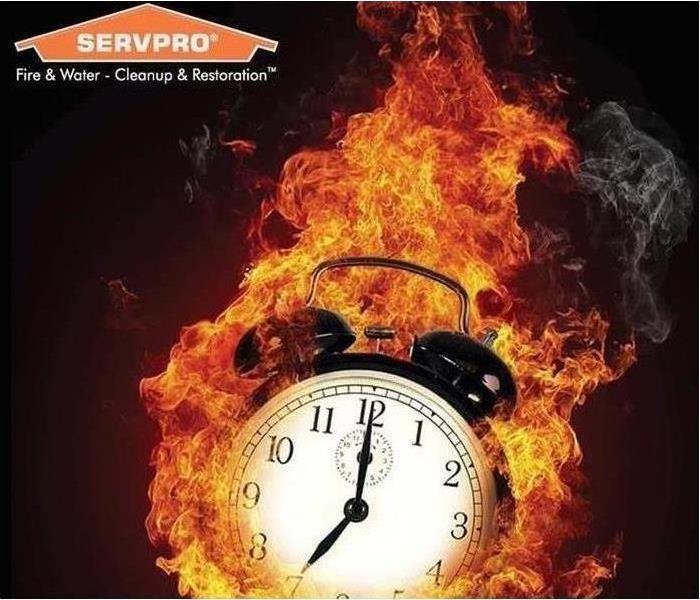 Wait for the professionals to help you!
Wait for the professionals to help you!
A fire can leave behind soot, smoke damage and a host of other problems. Ceilings, walls, woodwork, carpeting and floors will often need a thorough professional cleaning. If your home or business suffers a fire, it is important to take the appropriate steps to prevent further damage until your local SERVPRO® Dale City/Lake Ridge Professionals arrive. The following tips may help reduce damage and increase chances of a successful restoration.
DO THE FOLLOWING UNTIL HELP ARRIVES:
- Limit movement in the home to prevent soot particles from being embedded into upholstery and carpet.
- Keep hands clean. Soot on hands can further soil upholstery, walls and woodwork.
- Place dry, colorfast towels or old linens on rugs, upholstery and carpet traffic areas.
- If electricity is off, empty freezer/ refrigerator completely and prop doors open to help prevent odor.
- Wipe soot from chrome kitchen/ bathroom faucets, trim and appliances, then protect these surfaces with a light coating of lubricant.
- If heat is off during winter, pour RV antifreeze in sinks, toilet bowls, holding tanks and tubs to avoid freezing pipes and fixtures.
- Change HVAC filters; leave system off until a trained professional can check the system.
- Tape double layers of cheesecloth over air registers to stop particles of soot from getting in or out of the HVAC system.
DON’T TRY ATTEMPTING:
- Don’t attempt to wash any walls or painted surfaces without first contacting your SERVPRO® Dale City/Lake Ridge Professional.
- Don’t attempt to shampoo carpet or upholstered furniture without first consulting your SERVPRO® Dale City/Lake Ridge Professional.
- Do not attempt to clean any electrical appliances (TV sets, radios, etc.) that may have been close to fire, heat or water without first consulting an authorized repair service.
- Do not consume any food or beverages that may have been stored close to fire, heat or water, as they may be contaminated.
- If ceiling is wet, do not turn on ceiling fans. Wiring may be wet or damaged and cause electrical shock, and air movement may create secondary damage.
- Don’t send garments to the dry cleaner. Improper cleaning may set in smoke odor.
Should your home or business suffer a fire/smoke/soot damage contact us at 703-583-8484 to help make it "Like it never even happened."
Tips for Kitchen Fires
9/12/2018 (Permalink)
Did you know...
A majority of fires that take place in homes begin in the kitchen.
The holiday season is approaching, which means that many of us will be spending a lot more time in the kitchen. This also means that, with every pumpkin pie and each batch of Christmas cookies you make, there is a greater risk of a fire emergency.
Aside from calling 9-1-1, which should be one of your first moves, here are some quick tips for dealing with a fire emergency in your kitchen.
- Always watch your cooking; don't leave anything unattended
- Set a timer so that you don't accidentally burn something or forget that an appliance is being used
- If something on the stove catches on fire and it is small, cover it with a lid and turn off the burner
- Keep a fire extinguisher in the kitchen near your cooking area where it is easily accessible
- Add baking soda to a grease fire, not water
- Clean your appliances regularly so that grease does not accumulate and start a fire
- Clean and dust around and behind appliances, as dust accumulation can cause fires if it is close to electrical wiring
- Keep flammable objects away from cooking appliances, especially those things like tea towels and potholders
- Install a smoke alarm in your kitchen
- Test your smoke alarms and make sure they will work when you most need them!
Keep these quick tips in mind, and prevent a major fire damage emergency from taking place in your home this season!
Prevent Electrical Fires
9/12/2018 (Permalink)
Electrical fires are the cause of many house fires, and can be some of the most difficult to put out due to the difficulty of identifying the source. Proper care of electrical outlets and appliances will help to prevent electrical fires. It is very important to follow manufacturer guidelines when using electrical appliance and systems, such as the wattage guidelines given when changing lightbulbs. Be sure that you do not plug in too many electrical units into one outlet, as this could burn out the outlet and cause a fire. Be sure that you have your wiring checked regularly by an electrician. Faulty wiring is a leading cause of electrical fires and is a common problem in many homes. If you hear a sparking sound near a particular electrical outlet or appliance, or see smoke or smell burning after plugging a unit in, immediately unplug the object and call an electrician to check your wiring.
Finally, if an electrical fire does occur, do NOT attempt to put the blaze out with water. This will only make the fire worse and could shock or electrocute you. If safe to do so, attempt to unplug the source. Put the fire out using baking soda or a blanket to smother the flames. If the fire is larger, a class C fire extinguisher can be used. If the fire continues to grow, leave immediately! Do not be tempted to put out a growing fire by yourself. Allow the firefighters to do so.
If your home has been damaged by fire, please call SERVPRO of Dale City/Lake Ridge at 703-583-8484.
Smoke Alarms: LIFE SAVERS
9/11/2018 (Permalink)
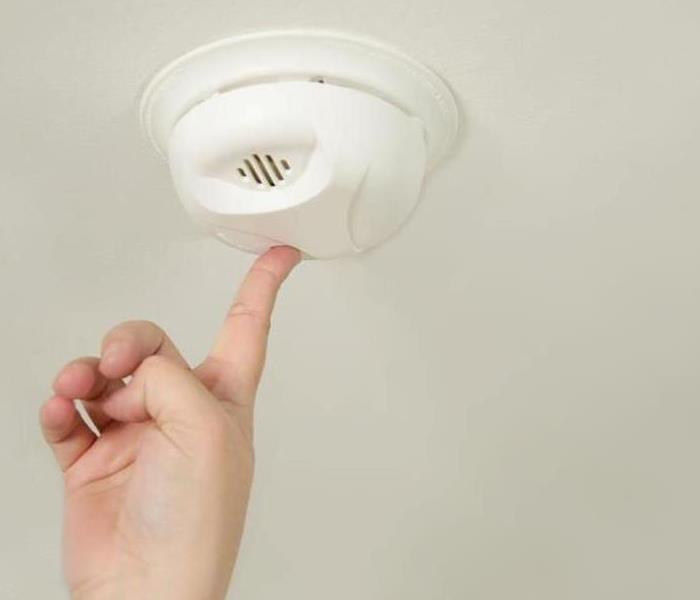 Test your smoke alarms monthly!
Test your smoke alarms monthly!
Smoke alarms save lives when properly installed and maintained, according to the National Fire Protection Association (NFPA).
In homes, smoke alarms should be in every bedroom and on every level, including the basement. In office and commercial environments, check your state requirements or contact your local Fire Marshall to help ensure all codes are met.
Test smoke alarms monthly using the test button. Smoke alarms with non-replaceable batteries need the entire smoke alarm unit replaced every ten years. Other alarms need batteries replaced every year, and the unit replaced every ten years. If the alarm chirps signaling low battery, take the proper steps to replace the unit or the batteries immediately. Never disable or remove the battery from an alarm. Almost half of fires where smoke alarms were present but did not activate had missing or disconnected batteries (NFPA).
In larger commercial facilities, hard wired or wireless smoke alarms offer benefits such as not needing to be tested as often and activating throughout the entire building if smoke is detected in just one area (NFPA).
If you need help installing, testing or changing batteries in your smoke alarms, contact your local fire department, an electrician or the American Red Cross.
Be sure your home or workplace has a fire emergency plan in place and conduct regular fire drills. For more information on emergency preparedness, contact your local SERVPRO® Dale City/Lake Ridge Professionals.
Before you read can you tell us the 5 most common Fire Hazards?
7/18/2018 (Permalink)
Below are the most common Fire Hazards in your home.
It's a fact that many house fires are caused by someone attempting to cook or smoke while under the influence of alcohol.
Candle fires happen in places like bedrooms and bathrooms where people use them as mood enhancers. Unfortunately, people can fall asleep with a candle still burning or leave the room without snuffing out the flame. Candles should NEVER be left burning unattended!
Many items in the kitchen can catch fire easily including pot holders, dish towels, and product packaging. Keep curtains away from the stove and clean up all spills on the stove top or near by counters.
Unsafe use of electricity can be a ticking time bomb! An electrical fire can happen at any time. Follow-up when a fuse or circuit breaker blows. Don't just reset the breaker or replace the fuse. Find out what caused the problem.
Too many fires are caused from careless disposal of smoking materials
Five Dangers of Deep Frying a Turkey
11/10/2017 (Permalink)
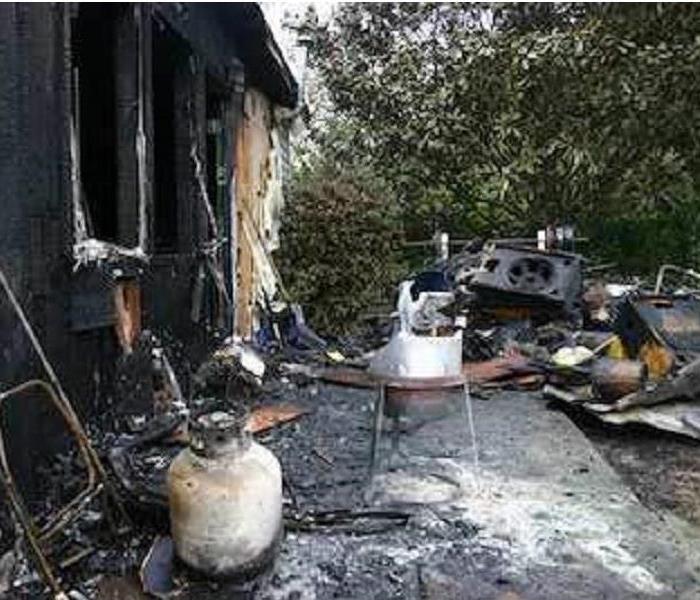 Damage caused to a home while deep frying a turkey! Be sure to follow the directions!
Damage caused to a home while deep frying a turkey! Be sure to follow the directions!
A deep-fried turkey: delicious, but worth it? If you’ve seen any of the numerous videos of turkey fryer explosions and fires online, you may have asked yourself this question before. Running the risk of bodily injury or property damage is something to consider when menu planning this holiday season.
- Turkey fryers can easily tip over, spilling hot cooking oil over a large area.
- An overfilled cooking pot will cause cooking oil to spill when the turkey is put in, and a partially frozen turkey will cause cooking oil to splatter when put in the pot.
- Even a small amount of cooking oil spilling on a hot burner can cause a large fire. n Without thermostat controls, deep fryers can overheat oil to the point of starting a fire.
- The sides of the cooking pot, lid, and pot handles can get dangerously hot.
Kitchen Cautions
11/10/2017 (Permalink)
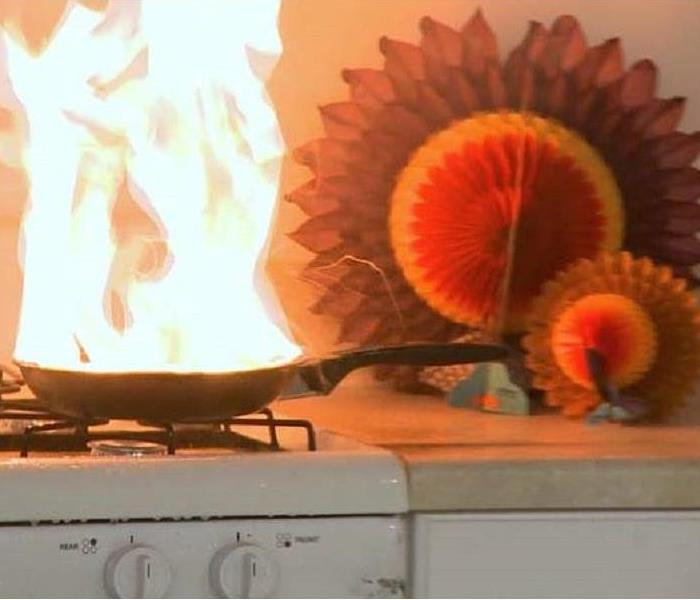 Please be cautious this Holiday season!
Please be cautious this Holiday season!
Each November, families gather to celebrate Thanksgiving by preparing a delicious feast, but if you don’t practice safe cooking habits, your holiday could become hazardous very quickly. According to the National Fire Protection Association, cooking fires are the number one cause of home fires and home injuries. The leading cause of fires in the kitchen is unattended cooking. It’s important to be alert to prevent cooking fires.
- Be on alert! If you are sleepy or have consumed alcohol don’t use the stove or stovetop.
- Stay in the kitchen while you are frying, grilling, boiling, or broiling food.
- If you are simmering, baking, or roasting food, check it regularly, remain in the kitchen while food is cooking, and use a timer to remind you that you are cooking.
- Keep anything that can catch fire—oven mitts, wooden utensils, food packaging, towels, or curtains—away from the stovetop. If you have a cooking fire, consider the following safety protocols to help keep you and your family safe.
- Just get out! When you leave, close the door behind you to help contain the fire.
- Call 9-1-1 or the local emergency number after you leave.
- For an oven fire, turn off the heat and keep the door closed.
- If you try to fight the fire, be sure others are getting out and you have a clear way out.
- Keep a lid nearby when you’re cooking to smother small grease fires. Smother the fire by sliding the lid over the pan and turn off the stovetop. Leave the pan covered until it is completely cooled.
SERVPRO® Dale City/Lake Ridge Professionals wish you a safe and happy holiday season.
Prevent Your Pets from Starting Fires
8/22/2017 (Permalink)
The National Fire Protection Association estimates that nearly 1,000 home fires each year are accidentally started by the homeowners' pets.
The American Kennel Club and ADT Security Services have joined forces to provide the following tips:
- Extinguish Open Flames - Pets are generally curious and will investigate cooking appliances, candles, or even a fire in your fireplace. Ensure your pet is not left unattended around an open flame and make sure to thoroughly extinguish any open flame before leaving your home.
- Remove Stove Knobs - Be sure to remove stove knobs or protect them with covers before leaving the house - a stove or cook top is the number one piece of equipment involved in your pet starting a fire.
- Invest in Flameless Candles - These candles contain a light bulb rather than an open flame, and take the danger out of your pet knocking over a candle. Cats are notorious for starting fires when their tails turn over lit candles.
- Secure Young Pets - keep them confined away from potential fire-starting hazards when you are away from home such as in crates or behind baby gates in secure areas.
Protecting Your Pets from Potential Danger
8/8/2017 (Permalink)
Home fires are the most common disaster that the American Red Cross responds to – and also the most preventable. According to the United States Fire Administration, an estimated 500,000 pets are affected annually by fires.
- The best way to protect your pets from the effects of a fire is to include them in your family plan. This includes having their own disaster supplies kit as well as arranging in advance for a safe place for them to stay if you need to leave your home.
- When you practice your escape plan, practice taking your pets with you. Train them to come to you when you call.
In the event of a disaster, if you must evacuate, the most important thing you can do to protect your pets is to evacuate them, too. But remember: never delay escape or endanger yourself or family to rescue a family pet.
Help Firefighters Help Your Pets
- Keep pets near entrances when away from home. Keep collars on pets and leashes at the ready in case firefighters need to rescue your pet. When leaving pets home alone, keep them in areas or rooms near entrances where firefighters can easily find them.
- Affix a pet alert window cling and write down the number of pets inside your house and attach the static cling to a front window. This critical information saves rescuers time when locating your pets. Make sure to keep the number of pets listed on them updated.
More helpful information can be found at http://www.redcross.org/get-help/how-to-prepare-for-emergencies/types-of-emergencies/fire/pet-fire-safety
Home Fire Tips
8/3/2017 (Permalink)
Did you know that if a fire starts in your home you may have as little as two minutes to escape? During a fire, early warning from a working smoke alarm plus a fire escape plan that has been practiced regularly can save lives. Learn what else to do to keep your loved ones safe!
Top Tips for Fire Safety
Install smoke alarms on every level of your home, inside bedrooms and outside sleeping areas.
Test smoke alarms every month. If they’re not working, change the batteries.
Talk with all family members about a fire escape plan and practice the plan twice a year.
If a fire occurs in your home, GET OUT, STAY OUT and CALL FOR HELP. Never go back inside for anything or anyone.
Visit http://www.redcross.org/get-help/how-to-prepare-for-emergencies/types-of-emergencies/fire to find out more helpful tips or follow our blog for more updates!
Be ready for whatever happens this Summer!
7/14/2017 (Permalink)
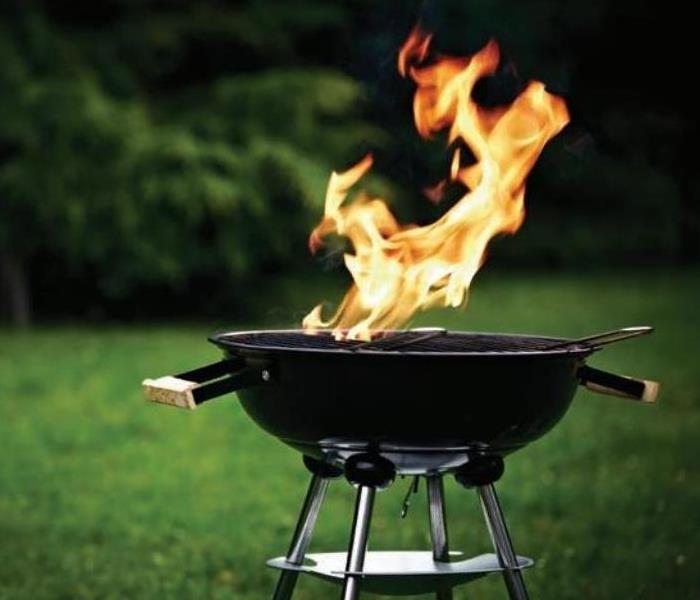 Be safe this grilling season!
Be safe this grilling season!
Each year, families and friends across the country enjoy the summer months with barbecues, camping trips, or by cooling off in a pool or lake. To enjoy these occasions, it is important to keep safety top of mind to ensure you have fun in the sun.
According to a recent study by the U.S. Consumer Product Safety Commission, nearly 11,900 Americans were injured by fireworks in 2015, with the majority happening in the month surrounding the Fourth of July. Another 8,700 are injured by charcoal/ wood-burning and propane grill fires. A grill should always be supervised when in use. Keep children and pets a safe distance from the grilling area to prevent accidental burns or tipping of the grill.
Grills also cause an average of 8,900 home structure or outdoor fires. “These fires caused an annual average of 50 civilian injuries and $2 million in direct property damage,” according to the National Fire Protection Association (NFPA).
If you enjoy lounging by the pool or going for a boat ride to cool off from the summer sun, make sure you exercise caution, especially when children are present. Only swim in approved areas and supervise children at all times when near the water.
The summer season should be a time to make memories and enjoy the great outdoors. Don’t become a statistic. Take precautions to prevent these events from putting a damper on your summer months!
Celebrate Summer Safety
7/14/2017 (Permalink)
 Enjoy your summer safely!
Enjoy your summer safely!
Summer is a time to enjoy the great outdoors, but it is also important to keep safety in mind. Consider the following tips, provided by the National Fire Protection Association, to keep you and your family safe all summer long.
- When using a charcoal grill, only use starter fluids designed for barbecue grills; do not add fluid after coals have been lit.
- When using a gas grill, ensure the hose connection is tight; check hoses for leaks. Applying soapy water to the hoses will easily and safely reveal any leaks.
- When camping, always use a flame-retardant tent and set up camp far away from the campfire.
- Always build a campfire downwind from the tent area. Clear vegetation and dig a pit before building your fire. Extinguish the fire before going to sleep or leaving the campsite.
- Store liquid fire starter (not gasoline) away from your tent and campfire and only use dry kindling to freshen a campfire
SERVPRO® Dale City Lake/Ridge Professionals wish you a safe and happy summer!
Why Trusting a Restoration Professional After a Fire Is So Important
6/20/2017 (Permalink)
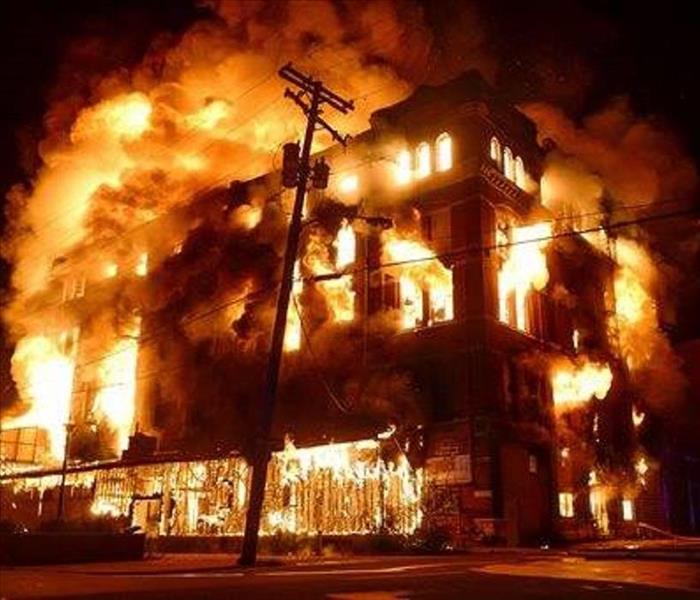 Trust SERVPRO to help in your time in need
Trust SERVPRO to help in your time in need
Because of the convection pattern that flames typically form during ignition, smoky residue saturates every opening. The soot constructs up in layers that may end up being solidified and tough to eliminate which is another reason to leave the cleaning to a specialist. When the cleaning teams do arrive, they promptly different salvageable items from charred debris, taking the things creating the strongest odors out for cleaning.
Following a fire, wall surface areas can be harmed by soot. Non-water based cleaners need to be used to remove soot from walls. These kinds of chemicals should be handled by a specialist due to the fumes and toxicity. Water-based cleaning items can cause spots to bleed into plaster walls which is why a trained specialist should be left to deal with these chemicals.
Most importantly, a restoration effort reduces the after-effects a blaze can have on the health of those who return in. If a homeowner does not have the property restored by a professional, the results can be found later on down the line. To an untrained eye they might believe the issue has been fixed, they experience the remaining impacts of indoor air pollution for numerous months later on in the form of increased respiratory discomfort.
Companies like SERVPRO are leading experts in fire restoration. They are trained to help remove your belongings as well as cleaning and storing them until your property has been restored to its original condition.
iCat - Contents Services
5/9/2017 (Permalink)
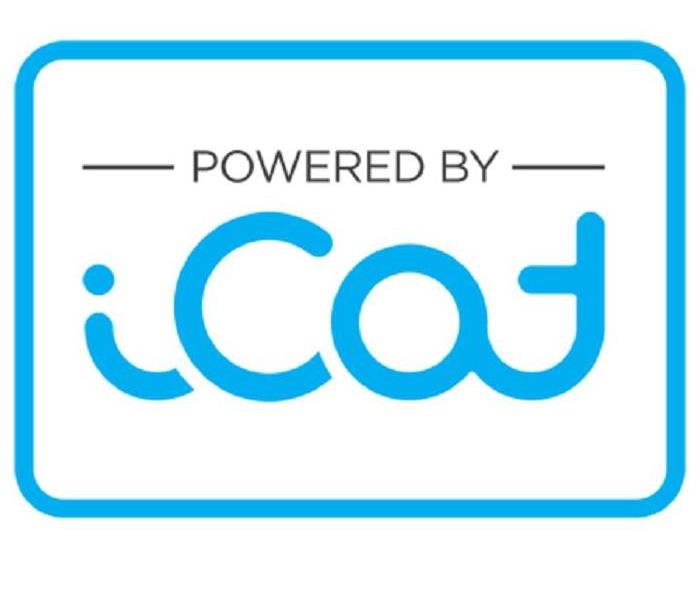 Content Processing is powered by iCat at SERVPRO Dale City/Lake Ridge
Content Processing is powered by iCat at SERVPRO Dale City/Lake Ridge
If your contents were damaged in a water damage or fire, have no fear SERVPRO Dale City/Lake Ridge Professionals are here to help. Our crews utilize iCat software during all pack-outs and non-salvageable contents inventorying.
This process allows our crews to manage contents more effectively and efficiently. The iCat application also allows the customer and adjuster to view the content processing in real time via a secure web address, with personal log-in and password.
How does the process work and why would it benefit all parties?
During each and every pack-out, the crew will photograph and apply a unique barcode to each item leaving the home. Once the item arrives at the cleaning facility the crew applies a new label to the item, the new label allows the crew to place the cleaned item in the correct room upon return. During this process, the customer is able to view the contents via the secure web address and request any items needed during the reconstruction time period.
The program also includes the ability to value non-salvageable contents. This process allows for descriptions, values and the customer to input on value of the contents and much more.
Please contact one of our representatives to learn more about our pack-out/non-salvageable inventorying processes at 703-583-8484.
Find out more about iCat here: https://www.icatcontents.com/powered-by-icat/
Celebrate Safely with a Recipe for Safety
11/21/2016 (Permalink)
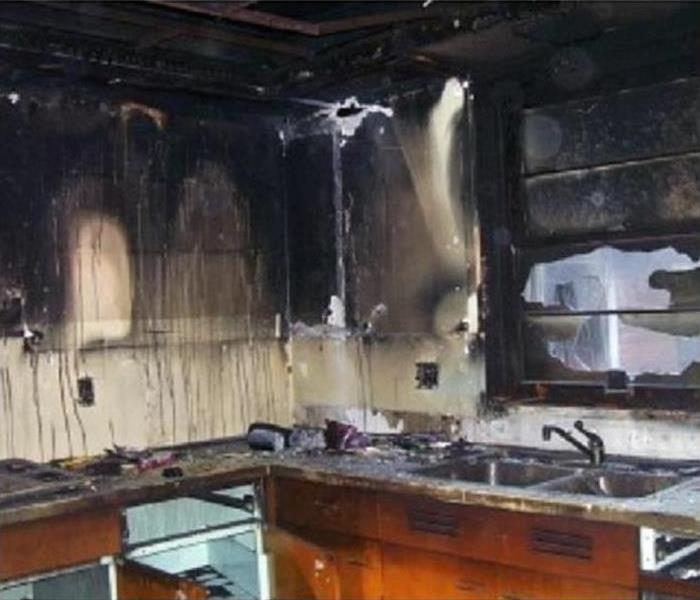 Did you know?......
Thanksgiving is the leading day for home cooking fires, with three times the average number!
Be SAFE!
Did you know?......
Thanksgiving is the leading day for home cooking fires, with three times the average number!
Be SAFE!
Each November, families gather to celebrate Thanksgiving by preparing a delicious feast, but if you don’t practice safe cooking habits, your holiday could become hazardous very quickly. According to the National Fire Protection Association, cooking fires are the number one cause of home fires and home injuries. The leading cause of fires in the kitchen is unattended cooking. It’s important to be alert to prevent cooking fires.
- Be on alert! If you are sleepy or have consumed alcohol don’t use the stove or stovetop.
- Stay in the kitchen while you are frying, grilling, boiling or broiling food.
- If you are simmering, baking or roasting food, check it regularly, remain in the kitchen while food is cooking, and use a timer to remind you that you are cooking.
- Keep anything that can catch fire –oven mitts, wooden utensils, food packaging, towels or curtains – away from the stovetop.
If you have a cooking fire, consider the following safety protocols to help keep you and your family safe.
- Just get out! When you leave, close the door behind you to help contain the fire.
- Call 9-1-1 or the local emergency number after you leave.
- For an oven fire turn off the heat and keep the door closed.
- If you try to fight the fire, be sure others are getting out and you have a clear way out.
- Keep a lid nearby when you’re cooking to smother small grease fires. Smother the fire by sliding the lid over the pan and turn off the stovetop. Leave the pan covered until it is completely cooled.
SERVPRO Dale City/Lake Ridge Professionals wish you a safe and happy holiday season!
Fire Safety Week
10/13/2016 (Permalink)
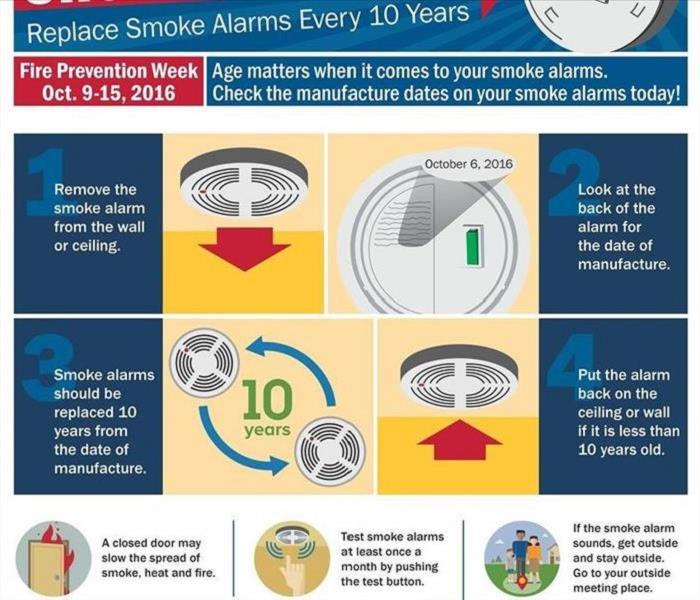 Check your smoke detectors!
Check your smoke detectors!
Did you know that 3 out of 5 home fire deaths are due to non- working smoke alarms?
It is recommended that you try and change smoke alarms every 10 years. Look on the back of the smoke alarm for the date of manufacture.
For more information on fire safety week visit the website of Fema:
https://www.usfa.fema.gov/
What To Expect If You Were to Have a Fire:
When we visit your home after a fire loss, we will scope the affected areas to determine the extent of the loss. We will always pretest affected surfaces to determine the type of smoke and which products will help us recover the area most effectively. We have the equipment, expertise, and experience to restore your fire and smoke damage. If a fire has damaged your home, call us right away at 703-583-8484. SERVPRO of Dale City/Lake Ridge will treat you and your family with empathy and respect, and your property with care.
Smoke and soot facts:
- Hot smoke migrates to cooler areas and upper levels of a structure.
- Smoke flows around plumbing systems, seeping through the holes used by pipes to go from floor to floor.
- The type of smoke may greatly affect the restoration process.
Different Types of Smoke
There are two different types of smoke–wet and dry. As a result, there are different types of soot residue after a fire. Before restoration begins, SERVPRO of Dale City/Lake Ridge will test the soot to determine which type of smoke damage occurred. The cleaning procedures will then be based on the information identified during pretesting.
Our Fire Damage Restoration Services
Since each smoke and fire damage situation is a little different, each one requires a unique solution tailored for the specific conditions. We have the equipment, expertise, and experience to restore your fire and smoke damage. We will also treat your family with empathy and respect and your property with care.
Have Questions about Fire, Smoke, or Soot Damage? Call Us Today – 703-583-8484
Smoke Alarms Save Lives
8/18/2016 (Permalink)
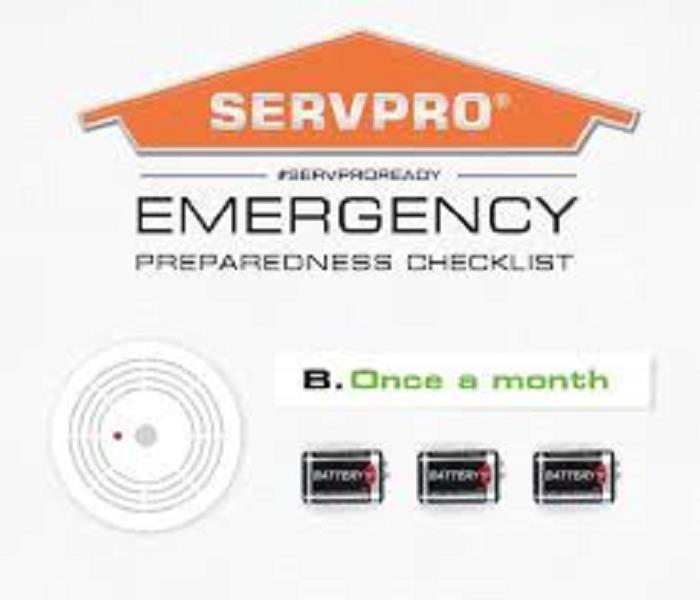 Be sure to check your smoke detectors!
Be sure to check your smoke detectors!
Smoke alarms play a vital role in saving lives, and when properly installed, can reduce the risk of fine injury in half.
The National Fire Protection Association recommends smoke alarms be installed in every bedroom, outside all sleeping quarters and on every level of the house. Business owners should consult the local Fire Marshall to ensure specific building fire codes and smoke detector requirements are met.
Smoke alarms work best when paired with a fire escape plan. A plan allows your family, employees or clients to escape quickly and safely in an emergency situation.
Review the following tips regarding smoke detector installation and maintenance. For more on emergency preparedness, contact your local SERVPRO Dale City/Lake Ridge Professionals at 703-583-8484.
- Install smoke alarms on every level of the home, including the basement.
- Smoke alarms should be installed away from the kitchen to prevent false alarms. Generally, they should be at least 10 feet from a cooking appliance.
- Test smoke alarms at least once a month using the test button.
- Replace batteries in all smoke alarms at least once a year. If an alarm “chirps,” the battery is low and should be replaced right away.
- Replace all smoke alarms when they are 10 years old.
JUST THE FACTS: Smoke Alarms
- Three out of five fire deaths occur in homes with no smoke alarms or when the alarms are not working.
- Smoke alarm failures usually result from missing, disconnected or dead batteries.
- More than one-third (37 percent) of home fire deaths result from fires in which no smoke alarms are present.
- The risk of dying in a home fire is cut in half in homes with working smoke alarms.
Smoke Alarms Save Lives
8/18/2016 (Permalink)
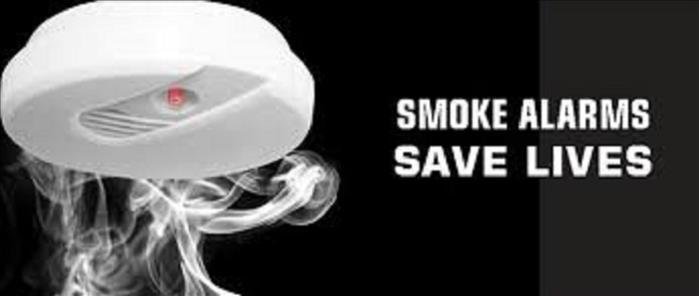 Be sure to check your smoke detectors!
Be sure to check your smoke detectors!
Smoke alarms play a vital role in saving lives, and when properly installed, can reduce the risk of fine injury in half.
The National Fire Protection Association recommends smoke alarms be installed in every bedroom, outside all sleeping quarters and on every level of the house. Business owners should consult the local Fire Marshall to ensure specific building fire codes and smoke detector requirements are met.
Smoke alarms work best when paired with a fire escape plan. A plan allows your family, employees or clients to escape quickly and safely in an emergency situation.
Review the following tips regarding smoke detector installation and maintenance. For more on emergency preparedness, contact your local SERVPRO Dale City/Lake Ridge Professionals at 703-583-8484.
- Install smoke alarms on every level of the home, including the basement.
- Smoke alarms should be installed away from the kitchen to prevent false alarms. Generally, they should be at least 10 feet from a cooking appliance.
- Test smoke alarms at least once a month using the test button.
- Replace batteries in all smoke alarms at least once a year. If an alarm “chirps,” the battery is low and should be replaced right away.
- Replace all smoke alarms when they are 10 years old.
JUST THE FACTS: Smoke Alarms
- Three out of five fire deaths occur in homes with no smoke alarms or when the alarms are not working.
- Smoke alarm failures usually result from missing, disconnected or dead batteries.
- More than one-third (37 percent) of home fire deaths result from fires in which no smoke alarms are present.
- The risk of dying in a home fire is cut in half in homes with working smoke alarms.
The behavior of SMOKE
8/3/2016 (Permalink)
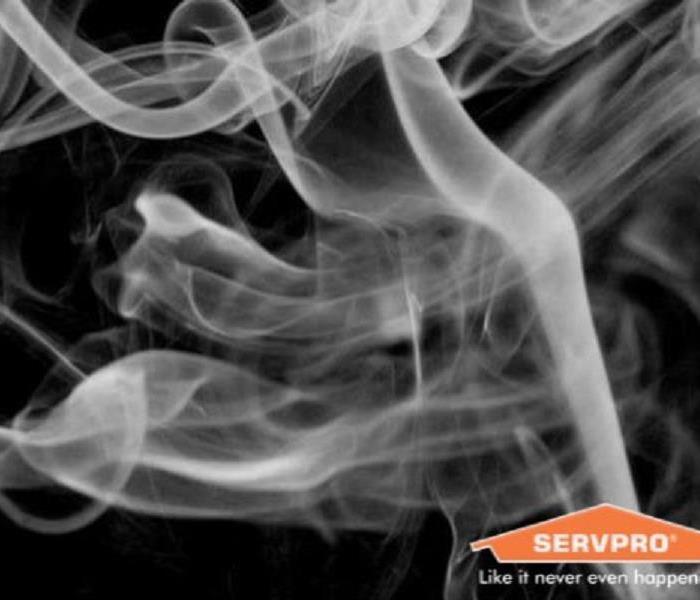 There are two different types of smoke -wet and dry. As a result, there are different types of soot residue after a fire.
There are two different types of smoke -wet and dry. As a result, there are different types of soot residue after a fire.
A fire loss can result in complex damages because of the unique behavior of smoke. A trained professional should survey the loss site to determine the extent to which fire, smoke, heat and moisture impacted building materials and contents.
SERVPRO Dale City/Lake Ridge Professionals know smoke can penetrate various cavities within the structure, causing hidden damage and odor. Our crew’s knowledge of building systems helps them investigate how far smoke damage may have spread. Here are some facts you may not know about smoke:
· Hot smoke migrates to cooler areas and upper levels of a structure.
· Smoke flows around plumbing systems, seeping through the holes used by pipes to go from floor to floor.
· The type of smoke may greatly affect the restoration process.
The different types of Smoke:
Wet Smoke (Plastic and Rubber)
Low heat, smoldering, pungent odor, sticky, smeary. Smoke webs are more difficult to clean.
Dry Smoke (Paper and Wood)
Fast burning, high temperatures, heat rises therefore smoke rises.
Protein Fire Residue (Produced by evaporation of a material rather than from a fire)
Virtually invisible, discolors paints and varnishes, extreme pungent odor.
Fuel Oil Soot (Furnance Puff Backs)
While “puff backs” can create havoc for homeowners, SERVPRO Dale City/Lake Ridge Professionals can, in most cases, restore the contents and structure quickly.
Other Types (Tear gas, fingerprint powder and fire extinguisher residue)
Other Types (Tear gas, fingerprint powder and fire extinguisher residue)
Special loss situations require special care.
SERVPRO Dale City/Lake Ridge Professionals are trained to handle even the toughest losses. If your home or business sustains fire or smoke damage, contact us at 703-583-8484 to help make it “Like it never even happened.”
Celebrate Summer Safely
6/21/2016 (Permalink)
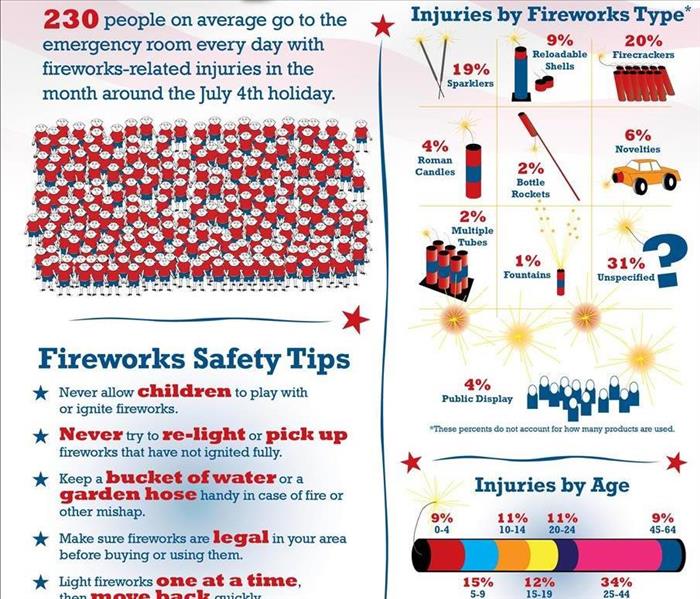 Have fun celebrating Summer, but remember safety first!
Have fun celebrating Summer, but remember safety first!
Summer is synonymous with barbecues, parades and fireworks displays!
There is nothing like firing up the grill during the summer months! Did you know, July is the peak month for grill fires? A backyard BBQ can become dangerous quickly if proper safety precautions aren't considered. We here at SERVPRO Dale City/Lake Ridge want you and your family to have an enjoyable summer. Consider the following tips to help ensure your summer celebrations are disaster-free!
- Propane and charcoal BBQ grills should only be used outdoors.
- The grill should be placed well away from the home, deck railing and out from under eaves and overhanging branches.
- Keep children and pets away from grill area.
- Keep your grill clean by removing grease or fat buildup from the grills and in trays below the grill.
- Never leave your grill unattended.
- When using a charcoal grill, let the coals completely cool before disposing in a metal container.
- Anyone using fireworks or standing nearby should wear protective eyewear.
- Do not try to re-light or handle malfunctioning fireworks. Keep a bucket of water nearby to fully extniguish fireworks that don't go off or in case of fire. Children should never pick up fireworks that may be left over as they may still be active.
- The safest way to enjoy fireworks is to attend a public display conducted by trained professionals.
FIREWORK FACTS:
- Fireworks cause an average of almost 20,000 reported fires per year.
- In 2013, sparklers caused 41% of fireworks injuries.
- On Independence Day in a typical year, fireworks account for two out of five of all reported fires, more than any other cause of fire.
HAVE A SAFE AND HAPPY SUMMER!






 24/7 Emergency Service
24/7 Emergency Service
